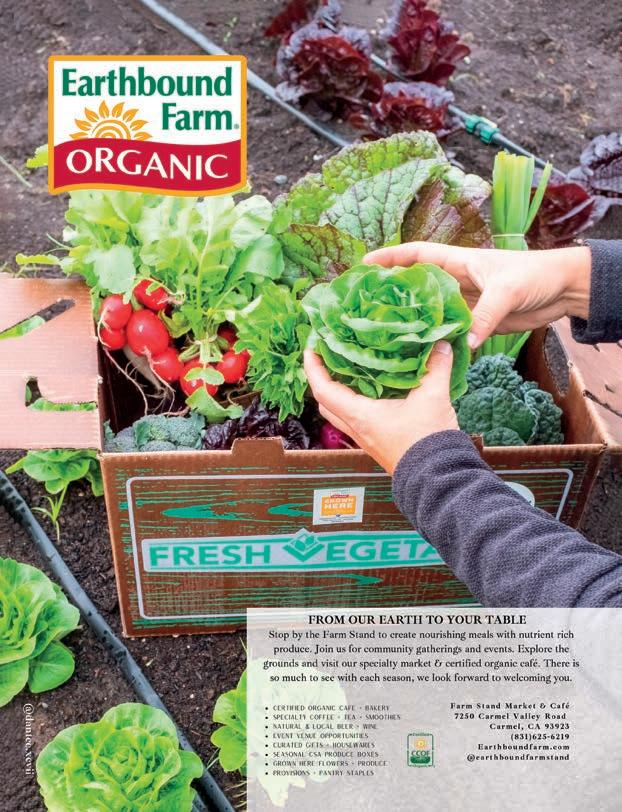




51
CONTENTS








51
CONTENTS


I’ve always embraced change: the challenge of a new job, the joy of exploring a new city, the adventure of moving halfway around the world.
As the highly quotable Will Rogers, once said, “Even if you are on the right track, you’ll get run over if you just sit there.”
That has more or less been my personal mantra since I was a teen. And as we were putting together this Summer issue of Edible Monterey Bay, the thread of change running through it became obvious.
EMB aims to reflect what is happening in our communities in Monterey, Santa Cruz and San Benito counties, and change is in the air.
Maybe it’s because the pandemic is finally winding down, or because we are emerging from the drought and rainiest winter anyone can remember, or perhaps because back-to-back fires and floods have made the urgent realities of climate change and environmental damage inescapable.
In this issue you will meet local residents who are creating change here in the tri-county area, people like Corey Ridings, who is working to make sure king salmon do not become extinct; the team behind Cruz Foam, who are inventing an alternative to Styrofoam from shrimp shells to help keep forever plastics out of the oceans; Salinas rancher Brian Palmer, who is raising a most sustainable and surprising source of protein; and Karla DeLong who plants dahlias to bring beauty and healing to a charred mountain community.
We also report on entrepreneurs who are effecting change in their own lives that ripples out into the entire community, people like Claribel and José Gallardo, who have worked hard to own their own organic farm in Watsonville; and talented Monterey chef Ron Mendoza, who is expanding to meet the huge demand for his exceptional breads.
All these people—and many others on these pages—are changing the Monterey Bay area foodshed for the better, making it stronger, richer and more resilient. I applaud them, as well as the talented journalists and photographers who so beautifully tell their stories in this issue. And, of course, a big thank you goes to our much-appreciated advertising partners who make Edible Monterey Bay possible. Thanks for reading!
EDITOR AND PUBLISHER
Deborah Luhrman
deborah@ediblemontereybay.com
831.600.8281
FOUNDERS Sarah Wood and Rob Fisher
CONTRIBUTING EDITOR
Mark C. Anderson
COPY EDITOR Doresa Banning
LAYOUT & DESIGN Matthew Freeman and Tina Bossy-Freeman
AD DESIGNERS Bigfish Smallpond Design Coline LeConte • tracysmithstudio
Zephyr Pfotenhauer
CONTRIBUTORS
Jeff Bareilles • Emily Beggs • Jamie Collins
Jackie Fogerty • Tamika R. Francis • Daniela
Gerson • Doriana Hammond • Coline LeConte
Laurel Miller • Ashley Owen • Aga Simpson •
Patrick Tregenza • Michael Troutman • Jessica
Tunis • Amber Turpin
ADVERTISING SALES
ads@ediblemontereybay.com • 831.600.8281
Shelby Lambert shelby@ediblemontereybay.com

Kate Robbins kate@ediblemontereybay.com
Aga Simpson aga@ediblemontereybay.com
DISTRIBUTION MANAGER
Mick Freeman • 831.419.2975
CONTACT US:
Edible Monterey Bay P.O. Box 487 Santa Cruz, CA 95061
ediblemontereybay.com
831.600.8281
info@ediblemontereybay.com
Deborah Luhrman Publisher
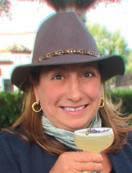
At Edible Monterey Bay , our mission is to celebrate the local food culture of Santa Cruz, San Benito and Monterey counties, season by season. We believe in sustainability, and we believe everyone has a right to healthful, clean and affordable food. We think knowing where our food comes from is powerful, and we hope our magazine, website and newsletters inspire readers to get to know and support our local growers, fishers, chefs, vintners and food artisans.
Edible Monterey Bay is published quarterly. All rights reserved. No part of this publication may be used without written permission of the publisher. Subscriptions are $28 per year at ediblemontereybay.com. Every effort is made to avoid errors, misspellings and omissions. If, however, an error comes to your attention, please accept our apologies and notify us. We also welcome letters to the above address. Thank you.




 BY JESSICA TUNIS
BY JESSICA TUNIS
Beeline Blooms is a love offering to community, first and foremost. Standing in her flower field, squinting against the late afternoon sun, Karla DeLong gestures toward the burned mountain landscape around us, her impetus for founding this nonprofit dahlia farm.

In 2020, at the height of the pandemic, the CZU wildfires destroyed 86,509 acres of forest and homes. Black tree trunks still darken the hillside and the sun now reaches places on the ground where it never did before. Temperature, wind and light all move differently through the changed landscape since the loss of forest canopy.
The DeLong family has lived and gardened on this property just off Alba Road for 15 years, and though their own house was spared in the fire, it was one of the few in the area that survived. The CZU fire destroyed many neighboring houses as well as outbuildings, orchard and beehives on the DeLong’s property, and came within three feet of their kitchen. In the aftermath of CZU, there was much grief to be processed—for the loss of sheltering trees and beloved neighbors, and for life as it was before. An uprooted feeling of living in a burned landscape pervaded the community.
Every window that looked out of the DeLong house framed some kind of tragedy: an empty building pad, a stand of dead firs, a heap of hastily cut logs left by PG&E. With the whole landscape scorched and her community scattered, DeLong filled her home with houseplants, just to have something green to tend. As she tended her own grief, she knew that others were suffering as well. “What do you do when someone is grieving, or feeling sad?” she asks rhetorically. “You bring them flowers.”
The sun kept shining in mercilessly through the windows and on the empty, burned ground outside, illuminating both what had been lost and the potential for new growth. In the newly sunny flat area outside the spared house, DeLong created Beeline Blooms dahlia farm to provide beauty,
maybe even a bit of healing, to a traumatized community. She has always been drawn to tending things: ample food gardens and flowers, bees and beloved dogs, family and friends. Community aggregates wherever she is, because one of her great gifts is the way she cares for people, and growing things alike.
From the farm’s inception, DeLong and her family imagined that fire survivors would drop by to pick free bouquets, a simple love offering to anyone affected by the tragedy/blazes. But even before the first blooms opened, they found that there was a deeper unmet need that the farm was filling, a sense of investing in hope, and in the creation of something beautiful. Volunteers showed up to plant dahlia tubers, lay irrigation tape, weed and prune, pound stakes and stretch twine to support the growing plants. Rows were planted in blocks of color to resemble a rainbow.
Once the flowers opened, in a riot of colors, visitors flocked to take home armloads of bouquets, or to take advantage of the free family portraits among the blooms, which photographer Orenda Randuch generously offered to fire survivors. Photographer Jackie Fogerty came regularly as well, to volunteer on the farm and capture the dahlias against the backdrop of the Milky Way.
“Everyone that came to the flower field took what they needed,” DeLong says. “Some people went immediately to the bright, raucous
DeLong created Beeline Blooms dahlia farm to provide beauty, maybe even a bit of healing, to a traumatized community.(Opposite page) One in a series of stunning night photos at Beeline Blooms by Jackie Fogerty, showing dahlias against a background of the Milky Way. (Top right) Karla DeLong harvests flowers on a foggy morning.




Beeline Blooms has brought beauty to the community and is actively seeking garden volunteers for the 2023 growing season.
colors, reds, oranges and yellows. Others were drawn to the cool, calm rows: pink, lavender and white.” Some of us needed bright, cheerful hope, and some of us craved soothing. Whatever the mood, there is a dahlia hue to represent it.
The diversity of dahlias is what keeps DeLong interested; with their complex octopoid genetics and their rapid growth rates, the flowers offer a fertile ground for hybridization.
The roots, or shall we say the tubers, of a thing matter. The seeds, the beginnings. Founded as an offering to community, the community responded with generosity in kind, contributing almost $10,000 to the rebuilding of the Alba Schoolhouse, through on-site donations, pop-ups and photography events. Free bouquets were dispatched to retirement homes, weddings and street fairs, friends and neighbors and strangers, local rebuild sites and people who had lost their homes in the fire. Flowers were donated to events with Campesina Womb Justice and the Teen Kitchen Project. Like a dahlia itself, with a short growing season, Beeline Blooms burst into existence and flowered profusely for the summer of 2022.
The winter was an intentionally fallow time, a deep breath after the flurry of fire recovery, the abundance of dahlia season, the sweat that it took to get the farm off the ground so quickly. As the growing season begins again, the dahlia tubers are sprouting, just beginning their yearly transformation. The greenhouse as well as the guest shower are once again full of cuttings, made to expand the field, sell or donate for the coming season.
Things may look different at Beeline this year. A lifelong gardener, DeLong knows that sometimes the responsibility a farmer has to their plants is to prevent
them from overbearing, to prune them back when they are stretched beyond their capacity to sustain such bounty. Sometimes that wild abundance is medicine for a time, and sometimes it needs to shift in order to be sustainable.
I asked her what she thought that might look like in the upcoming season, and she replied. “The truth is I really don’t know. Last year was the hardest thing I’ve ever done, the birthing of an idea. Creating something of myself from the dirt and sun. The spring was so late that I’m laying claim to taking my time deciding just what my intentions for the 2023 season will be.
“I daydream of standing again in the field, full of life and joy and healing, with family, friends and neighbors. Creating a space, welcoming folks back to the mountain. Our community needs it more than ever. Our fire survivors are being forgotten and they need us to remember that only a few homes and lives have been rebuilt after being destroyed by the CZU fire. The honest answer is I intend to do my best by these people, the flowers, bees and our greater community.
“What I can say is that I have already made more than 400 dahlia cuttings, acquired 159 new dahlia varieties and I’m sprouting 500 dahlia tubers. I guess that sounds like I’ll be farming this year. Ask me around the Summer Solstice and I bet I will know by then just what kind of farm it will be!”
Beeline Blooms
220 Stephens Lane, Ben Lomond beelineblooms.com
Jessica Tunis lives in the Santa Cruz Mountains and spends her time tending gardens, telling stories, and cultivating adventure and good food in wild places.
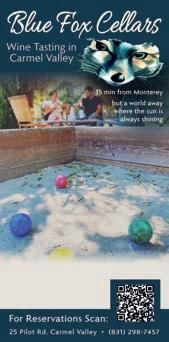






This is not a story about food you eat.
But it is a story about how food contains code for a more sustainable future. All it took to crack that code was two scientists and a shared love of the ocean. The result is Cruz Foam, a biodegradable packaging alternative made from chitin, the structural material found in shrimp shells as well as insects and fungi.
“Most of what goes into our material is a byproduct of industrial agriculture or seafood waste…but I do not recommend eating it,” says John Felts, CEO and co-founder of Cruz Foam. “It’s not going to cause you any harm, but it’s going to taste terrible; it has no flavoring.”
Cruz Foam was first imagined by Felts and Marco Rolandi in 2017 at the University of Washington. Rolandi had been studying biomimicry, or ways to use naturally sourced materials for things like biomedical tools and plastics. When Felts started similar research on chitin, the two joined forces and later stumbled upon their first big idea, which originally had nothing to do with packaging.
“We really formed a more personal relationship, beyond academics, over our love of the ocean and surfing,” says Felts. “We knew this material had great properties, and the idea just popped into both of our heads—surfboards and foam. That was the lightbulb that kicked off the company.”

Love of the ocean and surfing not only catalyzed the first iteration of Cruz Foam, but it also brought the duo to Santa Cruz to continue their research and, of course, surf more. And Santa Cruz would prove to be the perfect place to test the waters.

“When I decided to move to UCSC, I asked John if he was interested in continuing this research,” Rolandi says. “When John won the UCSC Grad Slam competition for presenting his work and placed second at the UC system-wide competition, he received so much enthusiasm that we decided to explore making this research concept into reality.”
For a year the team went all in on surfboards—finessing the foam, building prototypes (which of course had to be tested) and conducting market research. Then one crucial conversation between the two founders and Toby Corey, longtime adviser and current chief operating officer, changed everything. They realized their mission to address plastic pollution in the ocean was much bigger than surfboards. But, luckily, so was the potential for the product they had created.

By 2018 they pivoted to making packaging materials, notably a biodegradable alternative to Styrofoam. The secret sauce remains chitin,

the second most abundant organic compound on the planet. Cruz Foam’s first line of products replaces bubble wrap, bubble mailers, protective wraps and coolers. Demand is intense from all reaches of the world for use in sectors like wine, coffee, spirits and, at the top of the list, seafood.
“It’s a great picture of the circularity of our product—we’re looking at how we capture waste, and there’s so much in the seafood industry,” says Felts. “Why not take that waste and create a package that then can ship salmon, lobster, even shrimp. And at the end of
They realized their mission to address plastic pollution in the ocean was much bigger than surfboards.Partners John Felts (left) and Marco Rolandi bonded over their love for surfing, below they are attending the NEXTIE awards in Santa Cruz; where Cruz Foam was honored as Innovative Business of the Year.
the day, the person receiving it has a complete system that works, not only for receiving the materials but the disposal and its returning to earth.”
Since hitting the scene, Cruz Foam has attracted the attention of not just businesses but also venture capitalists. Last October it raised $18 million in funding, even capturing the interest of actors Leonardo DiCaprio and Ashton Kutcher, who both serve as investors and advisers. This past February, Cruz Foam landed its first major partner, Atlantic Packaging, which will start rolling out products made with Cruz Foam later this year. The company has also grown to about 30 employees working out of three locations. In addition to its two existing Westside spots, Cruz Foam recently moved into a bigger facility in downtown Santa Cruz.
“Packaging is now part of the consumer experience,” says Felts. “There has been this gargantuan shift around how brands are looking at packaging now. We’re trying to understand where we can offer a high-value product and change how people look at e-commerce from the local to global level.”


With many recyclable plastics still winding up in landfills nowadays, Cruz Foam
is focused on making truly earth-digestible products. The foam can be composted in backyards and industrial facilities, and the packages with foam with cardboard are curbside recyclable—as the foam dissolves in the cardboard repulping process.


Some of the materials can live other lives too. Coolers, for example, can be reused—replacing disposable Styrofoam containers that typically disintegrate after a couple uses. The foam also makes a stellar soil amendment, and the team is studying its use in vertical farming and industrial agriculture.
While Cruz Foam has come a long way since the days of surfboards, the vision remains the same.
“My hopes for the future are that in 10 years, there will be no more beach cleanups needed as human-made products will re-integrate into soil and ocean ecosystems rather than landing as trash on our beaches,” says Rolandi.
And at the rate Cruz Foam is going, that dream might just be possible.
Ashley Owen is a writer and recent Massachusetts transplant. Her passion for learning about local food is only overshadowed by her passion for writing about it. Or maybe eating it. Safe to say, she is a lover of food and words, and also driving very fast in the left lane.
JACKS MONTEREY
California Coastal Cuisine
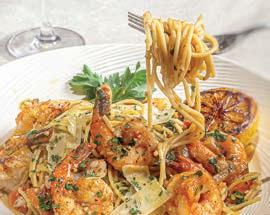
Locally sourced ingredients paired with award-winning wine and cocktails
Breakfast: 6:30am to 10:30am
Dinner: 4pm to 10pm jacksatportola.com
Two Portola Plaza | Monterey, CA 93940
Complimentary Parking
Monterey’s Original Craft Brewery
Serving award-winning craft beer with a pub style menu and sports on 18 HDTV’s
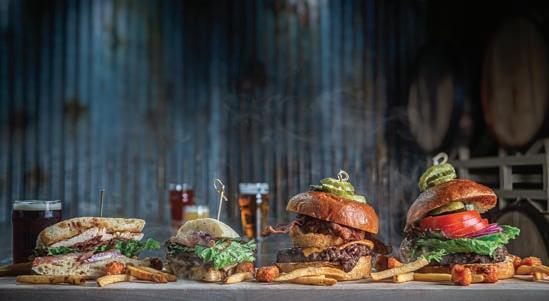
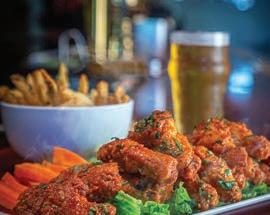
Wednesday - Sunday: 4pm to 10pm
Monday & Tuesday: Closed peterbsbrewpub.com
(831) 649-4511 portolahotel.com

For celebrated chef Ron Mendoza and company, the path to breadmaking enlightenment was not a straight rise
BY MARK C. ANDERSON PHOTOGRAPHY BY PATRICK TREGENZAYes, this is a story about breaking bread, but it’s also about breakdowns, and making the best of both.
It’s a story about community and redemption too. And as much as anything, it’s a story about the interplay between simple and fancy. Fancy came first.
Ad Astra Bread Co.’s cofounder and primary flavor maker Ron Mendoza trained at culinary school then leapt into restaurant life wheels up. He was finding fulfillment in competitive skateboarding, then a new passion possessed him. He was working at landmark Los Angeles spot Nick + Stef’s Steakhouse under heralded chef Joachim Splichal when it happened.
The night it clicked: Oct. 13, 1999.
His shift in the kitchen had already stretched long when his managers asked if he’d stick around for a special event. The Council of the Library Foundation would be honoring Jacques Pépin and Julia Child on her birthday.
The menu that night stacked summer white corn soup with lump crab meat, heirloom tomato towers with grilled onion vinaigrette and crispy filet of beef on horseradish potato cakes. Mendoza still keeps a signed copy.
But that’s not what did it for him. Instead it was the toil, teamwork and tasty possibilities.
“Between the sense of energy, the stress of getting the work done, and everyone coming together—and being at the level of a restaurant that created an environment where I could meet and cook food for people like Child and Pépin,” Mendoza says, “I thought, ‘Oh, this is what I want to do.’”
Something more subtle was at work too. Across a 17-hour shift, Mendoza recognized a familiar element.
“I came from skateboarding culture, where you create a sort of family with a wide variety of people,” he says. “Ultimately you have a group of friends that will teach you technique—in skateboarding, someone will teach you a trick, and with cooking, someone will show you how to break down a chicken—but it’s up to you to learn more. I knew if I pushed myself, I’d get opportunities.”
That he did, eventually traveling to bright-light events across continents, and more immediately jumping across L.A. to Nick + Stef’s higher-end sibling Patina.
Next up was French Laundry. “French Laundry was too structured, too set in their ways,” he says. “I came from a creative place, and I didn’t think that was achievable there. They wanted perfection, not creativity.”
Fortunately celebrated chef-restaurateur Walter Manzke, who knew
Mendoza from Patina, was partnering with David Fink on projects in Carmel, and sought a pastry chef.
“We saw pedigree,” Fink says, “and that the guy is an amazing pastry chef.”
At what would become Aubergine, Carmel’s first Michelin-starred restaurant, Mendoza seized upon greater creative freedom. Soon he found fresh inspiration from incoming chef Justin Cogley, a pro figure skater counterpoint to Mendoza’s skateboarding game.
The resulting plates flirted with the boundaries of reality. Truffles, foie gras, white chocolate and caviar all factored into desserts. Things like frozen cream cheese-tangerine shards, candy cap mushroom puffs and ginger-cookie-wrapped scoops of sorbet—disguised as rocks— took shape.
“I was seeing how far I could manipulate something—with ingredients, technique, flavor,” he says, “spicy, hot, cold, acidic, using vegetables in different ways, making a course look like a forest floor.”
But it didn’t resolve a longing. Alaina Musich, who worked with Mendoza at L’Auberge, and now partners with him on Ad Astra, had a front row seat.
“He was doing that super-conceptual, chef-culture stuff that was so intense and so meticulous,” she remembers. “Something he always said was that he wished he could do that for his friends, or have something to hand to neighbors…and it wouldn’t cost what [a $250 tasting menu] does.”
The next chapter started sweet. Then got sticky icky.
Mendoza and Musich found partners to launch something that would be more accessible to friends and neighbors.
Revival Ice + Cream applied Mendoza’s fine dining acumen to things like “bees knees” ice cream with beeswax, honeycomb candy, burnt honey and bee pollen.
“It’s the things I was doing in fancy kitchens, for more people who don’t necessarily have the money for fine dining,” he told me in 2016. “The thought process is the same.”
Revival drew a feverish following. Lines started spilling onto the sidewalk. Almost as quickly, he and Musich discovered they were in an uneven relationship with their investing partner, who has since sold Revival, which continues to be a downtown Monterey destination.
Mendoza is straightforward about it. “There are people who can make things and people who take things,” he says. “It happens a lot in the industry. It’s important to protect yourself, and maintain control and have rights to what you create.”
He didn’t lose the lesson. Call it a blessing served cold.
We want to be community bakers—providing something that on our part is very skillful, but is an everyday thing, not a luxury.



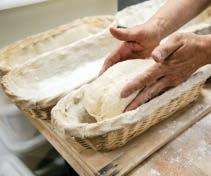
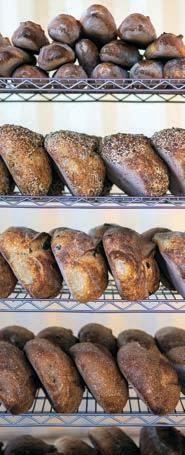
Over the course of a year post Revival, Mendoza thought about his next step, and started drafting a detailed business plan. Along the way, he gravitated toward a foodstuff even simpler than ice cream.
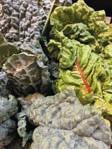
“There’s something about bread that is so raw and stripped down,” he says. “It’s three ingredients: flour, water, salt.”
Fink, after decades in hospitality, offers context. “It’s harder in my opinion to make truly great bread than create a pastry program,” he says. “We all eat at bakeries. What separates the best? It’s technique, it’s passion, it’s the right ingredients, it’s knowing what the dough feels like. Ron’s just really good at making something simple that’s wonderful.”
Mendoza can get philosophical about the elemental role bread plays.
“Every culture has bread,” Mendoza says. “You can live off it. Every day people are getting bread and eating it.”
That said, simple shouldn’t be confused with easy.
“It takes a lot of skill and patience and learning,” Mendoza says. “It’s an art.”
Ad Astra Bread Co. made its debut in September 2019, as Other Brother Beer Co. opened its doors to a throng of people from across the region.
Lines at Ad Astra stretched a dozen deep opening night and enthusiasm never waned. Not that there weren’t misfires— note bread made with spent grain with rice hulls that ripped up eaters’ throats.
Mendoza was OK with missteps. He entered into the project eager to see what worked, which became clearer after COVID made in-person service a non-starter.
“We decided to go slow and see what happens,” he told Edible last fall. “I didn’t know if bread was going to take off or if we would be a cool eatery. We realized that bread was what we needed to focus on. That’s what we became good at.”
As Ad Astra’s olive sourdoughs, French baguettes and focaccias converted the masses—and restaurants like Stationæry and Wedo’s at Dust Bowl Brewing
asked for more rolls and buns—the tight quarters at Other Brother got less tenable.
Mendoza watched his pastry chef trying to scale desserts with a countertop KitchenAid. Racks and racks of loaves cooked overnight swallowed up floor space at the brewery every morning. “We were bursting at the seams,” he says. “We had to tell wholesalers and farmers market shoppers we can’t do more.”
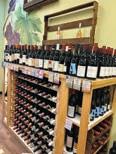
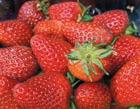
“My team was starting at 4[am], then 3, then 2, then 1, then some came in at 11[pm], just to have everything done and cleaned up before the brewery team got there. Bread elves!”
A new headquarters on Alvarado Street in downtown Monterey, a few doors down from Revival, in the former Bull & Bear, will allow production to level up.
The 2,800-square-foot space (compared to 400 in Seaside) will be mostly kitchen space, with a conservative opening date of late June.
The storefront will feature grab-and-go and sit-and-savor options, with a double queue system to keep movement fluid.

Ad Astra comes layered with connectivity as much as anything else.
Layer one: providing something foundational for the people.
“Whatever we do is part of the community,” Mendoza says. “It’s not something for me; it’s what I’m able to give to everybody else, and what the Peninsula wants.
“I’m always telling my team, we want to be community bakers—providing something that on our part is very skillful, but is an everyday thing, not a luxury.”
Layer two: supplying breads to discerning foodie spots around the area, whether it’s the base for avocado toast at Captain + Stoker or the sourdough that sells out daily at Elroy’s Fine Foods.
“I love the idea that our bread transforms from a simple thing to something that’s more elevated,” Mendoza says.“So many people come in and say, ‘I had dinner last night at Bernardus or Salt Wood

and we had to get some for ourselves and take it back to Nebraska.’”
Layer three: building culinary IQ by investing in aspiring bakers.

Josie Lewis will run Snack Shack—which replaces Ad Astra at Other Brother—and can speak to the educational part.
“Ron taught me everything I know about naturally leavened breads,” she says. “He’s incredibly collaborative. If you have ideas, he wants to hear them, and he wants you to try them.”
Musich kneads that wisdom into the bigger dough.
Expected to open in early summer, the new Ad Astra bakery in Monterey will allow the business to expand.
“We’re hoping to raise the level of education to make Monterey a destination workplace where people want to learn, with a chef-driven style of committing to product,” she says. “We try to push that edge.”
That ambition also applies to their new storefront.
“There’s a certain execution, atmosphere, aesthetic, cleverness and customer experience you get at good bakeries in San Francisco, Seattle or L.A.,” Musich says, “more of a big city feel. We are trying to bring that level of excellence to this area.”
Which may sound a little—wait, what’s the word—fancy.

Think again.
As Mendoza says, “Here’s this big rustic country loaf of bread, nothing too complicated or overwrought. Tear into it and start eating in your car.”

479 Alvarado Street, Monterey • adastrabread.com






Our founder Bernardus Pon chose to cultivate his premier-class wine brand in Carmel Valley. With its west-facing orientation, hot days, chilly nights, and stunning beauty, it is the perfect location to produce wines that rival the greatest on the globe. Following the creation of its powerhouse wine portfolio, Bernardus welcomed a new member to its family in 2022, the world’s first Provence Rosé Golden State. This joint venture with Château La Coste in the world-famous Provence region resulted in a premium French Rosé with a twist of California. Today the brand is more than just wine, with a challenging championship golf course based in the Netherlands which will host the 2026 Solheim Cup. Bernardus creates memories that will last a lifetime. www.bernardus.com/rose

When you hear the word prunes does your mind immediately think of dried plums touted as being full of fiber and good to keep in your pantry? Dried prunes may serve a medicinal purpose and are very tasty especially when paired with smoked almonds, but if you have never eaten or cooked with fresh prune plums, be sure to head to the farmers market this summer and pick some up.
They are sweet-tart with firm flesh that doesn’t squirt juice all over, and their chewy skin adds a desirable texture. Prune plums have very low water content, which results in concentrated sugars, almost as if they were dry farmed. When cooked, the heat releases their jammy magic and creates a gorgeous fuchsia hue. They make decadent desserts with slight citrus notes that have pastry chefs searching them out for their tarts and cakes.
California currently produces 250 varieties and more than 90 percent of all plums grown in the U.S. California-grown plums are derived from either European or Japanese varieties. The large, sweet and juicy plums commonly found in markets—like the prized Santa Rosa plum developed by Luther Burbank—are generally Japanese varieties. Because they are available in many colors and have a high water content, they are mainly used for fresh eating.
European prune plums (Prunus domestica) are most often consumed as dried plums, commonly known as prunes. They are much smaller than Japanese plums, more like the size of a small chicken egg with a football shape. There are more than 1,000 European prune plum varieties with varying skin and flesh colors. However the most desirable are French plums which have a dark purple-blue skin and a light green to golden yellow flesh. The most popular variety grown for drying and fresh eating is the improved French, an early variety with a pit that easily pulls away from the fruit, known as freestone. Prune plums are hard to find in grocery stores, and can typically only be found at the farmers market or from backyard growers selling by word of mouth.
European prune plums likely originated in Syria. Dried prune plums were traded across Europe and were a perfect snack for long travels, with vitamins and nutrients that provide sustenance on extended expeditions. Spanish padres grew prune plums in mission gardens. Then during the Gold Rush, these little oval plums were planted in places with dry, hot summers and cool winters.
Beginning in 1871 Felix Gillet propagated and introduced over 40 varieties of French plums and nuts to California, beginning in the Sierra Foothills. He realized that the various places in The Golden State were similar to those in the Clairac Valley in southwestern France.

The variety originally called Clairac Mammoth d’Ente, now simply called the improved French, became the standard for the California prune industry and still is the main variety grown for prunes. Santa Clara Valley became the state’s epicenter of commercial prune plum production, peaking in the 1930s. But prune production declined due to oversupply, and orchards were removed as urbanization increased.
It wasn’t until the 1960s that prunes were again grown, this time in the San Joaquin Valley, where irrigation was improved to allow for extensive orchards.

Nadine Schaeffer of Birdsong Orchards in Watsonville grows a variety of plums including her favorite, imperial epineuse, a sweeter, more succulent larger cousin of traditional French prune plums. At the English National Fruit Trials this variety is used as a standard against which all other prune plums are judged. This variety was a seedling discovered in Clairac, France around 1870 and introduced by the Felix Gillet Institute in 1878. Schaeffer’s favorite culinary prune plum is the damson plum, which she calls the “Concord grape of the plum world.” The outside is a gorgeous bluish-purple shade with gold flesh. The flavor is magnificent—but it’s best cooked or baked.
Massa Estate Organic Vineyards in Carmel Valley grows two permanent hedgerows of French prune plums between the vines to at-
tract beneficial insects to its organic vineyard. The tasty fruit are just an extra benefit. The plum trees are actually part of an ecologically engineered plan for biological control of vineyard pests. The plum trees provide the perfect sheltered habitat, and the flowers are a good source of nectar, a food source that encourages parasitic wasps, predatory mites and other beneficial insects to make a home in the trees. Not only do the plum trees attract beneficial insects but they also attract leafhoppers, which is a major pest in vineyard grape production. The beneficial parasitic wasps have plenty of food to increase their population and move on to the vineyards to eat even more leafhoppers before they can cause problems in the grapes. The prune plum trees have now become a self-regulating system of biological control, which is the key to integrated pest management.
In addition, there is a buzzing sound in the prune trees from the insects they attract that seems to keep the birds from going near the trees and snacking on the plums. There is never an issue with bird damage in the plum trees, likely due to the sound coming from the tree canopy. Nature is so cool!
Massa sells its French prune plums in its tasting room and to restaurants on the Monterey Peninsula, and Big Sur Bakery makes a jam out of its prized prune plums.


Plums are some of the easiest fruit trees to grow. Some are alternate bearing, meaning that every other year you will have less fruit.
European plums, which include both French and Italian varieties such as the stanley, Italian, valor and improved French (a heavy producer), are mostly self-pollinating but can benefit when several varieties are grown. Japanese varieties though typically need pollinators.
When planting, gopher wire is a must for young trees. Dig a hole twice as deep and twice as wide as your tree and amend it with compost or worm castings. Plant trees in the spring, and depending on whether you have a dwarf, semi-dwarf or standard tree, you will need to space them 10 to 25 feet apart. Dwarf trees don’t produce as long as standard trees, so keep that in mind when choosing. Keep moist until they are established. Starting in four to five years you will have an abundant harvest, up to 200 pounds of plums per tree, if managed well. Prune stone fruit in the summer or fall after the harvest is over.
Plums are very high in potassium which helps regulate the salt level in the body and can help lower blood pressure. They are also full of fiber and vitamin C, calcium, vitamins K and A as well as micronutrients.
Both fresh and dried plums are a great addition to a charcuterie or cheese platter. I love them on salads with some salty cheese like feta or a strong cheese like bleu or Gorgonzola. I have made them into stone fruit salsa, and also baked and put them on top of ricotta or cottage cheese drizzled with honey.
Many herbs complement cooked plums, such as rosemary, thyme, lemon verbena and sage. I have made plum thyme lemonade that was perfection. You can also make mixed drinks with the plum and thyme mixture. Simply coat the plums with sugar, mix in fresh thyme and add some lemon verbena or lemon balm if you have it and macerate overnight. Then pull off some of the liquid before you cook the rest down into a jam. Make a shrub by adding some vinegar (preferably a lighter flavored like white balsamic or Champagne to not overpower the fruit), add the fruit and herb mixture lemonade or use as a base for a cocktail with some fresh lemon, bubbly water and gin or vodka.
European plums really shine when cooked or baked due to their concentrated flavors. Use them in compotes and sauces for roasted pork or poultry dishes, grill them, mix into rice dishes, blend into salad dressings, or add to yogurt. They also mingle well with salty foods like olives, anchovies and miso paste.
Fresh prune plums are typically available in late summer through early fall, depending on how warm temperatures get on the farm where they are growing. Look for fruit that is firm without blemishes and has a powdery natural bloom on it, which means they are fresh and have not been handled too much or are too ripe. This white bloom protects the plums from pests, bacterial breakdown and drying out. Prune plums will last a long time in the refrigerator, however, they taste best when consumed within a week once ripe.
I hope you can locate some of these fancy plums and try them for yourself!
Jamie Collins is the owner of Serendipity Farms. She hosts U-Picks and a Friday Farm Stand at 26500 Val Verde Drive in Carmel, and attends farmers markets in Carmel and Santa Cruz, where you can find her fresh organic fruit, vegetables, herbs and flowers. Find out what is being harvested @fabulous_serendipity_farm.
To make a rustic prune plum galette, simply roll your favorite pastry crust into a circle. Wash and cut plums into quarters, removing the pits. Place plums at the center of the pastry crust in a pile or in concentric circles, leaving a 2-inch border. Sprinkle with 2–3 tablespoons of sugar depending on how sweet the plums are and dot with bits of butter. Fold up the edges of the pastry to form the galette. Sprinkle the crust with more sugar. Bake at 375° F for 30–40 minutes, until bubbly and browned.


*Apples • ****Apricots • Avocados • Blackberries • ****Blueberries
*Boysenberries • Cactus Pears
**Loquats • ***Melons
***Pears
Plums
**Cherries
Nectarines
Raspberries
Figs
Olallieberries
***Grapes • Lemons
Oranges • Peaches
Strawberries • Tayberries
**Artichokes • Arugula
Broccoli
Chard
Eggplant
Lettuces
Cabbage
Chicory
**Asparagus
Cardoons

Collards
Mushrooms
***Peppers, Bell
Potatoes
Carrots
Corn

Basil
Beets • Bok Choy
Cauliflower
Cress
Cucumber
Celeriac • Celery
Dandelion
Green Beans
Kale
Leeks
Pea greens • Peas
Radishes
Spinach
Tomatoes • Turnips
Abalone • Halibut, California
Lingcod
Summer Squash

Rock Cod (aka Snapper, Rockfish)
Sablefish (aka Black Cod) • Salmon, Chinook/King • Seabass, White • Squid
Market Sole (Dover, Petrale) • Spot Prawns • Tuna (Albacore)
*Comes into season in June **Ends in June ***Comes into season in July
****Comes into season in August *****Goes out of season in July
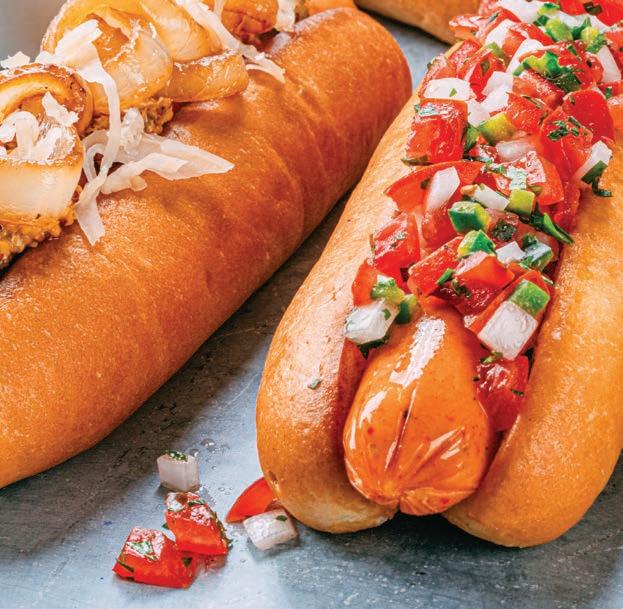







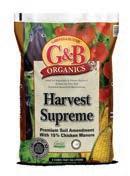

G&B
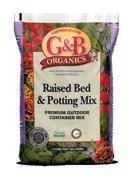

93924 (831)659-2291



Martins’ Irrigation 420 Olympia Ave. Seaside, CA 93955 (831)394-4106



Mountain Feed & Farm 9550 Highway 9 Ben Lomond, CA 95005 (831)336-8876
The Plant Works 7945 Highway 9 Ben Lomond, CA 95005 (831)336-2212
San Lorenzo Garden Center 235 River St. Santa Cruz , CA 95060 (831)423-0223
Scarborough Gardens 33 El Pueblo Rd. Scotts Valley, CA 95066 (831)438-4106
Sierra Azul NurseryGarden 2660 E. Lake Ave. Watsonville, CA 95076 (831)728-2532
Tope’s Sustainable Garden Center 115 Monterey Salinas Hwy Salinas, CA 93908 (831)455-1369
Valley Hills Nursery 7440 Carmel Valley Rd. Carmel, CA 93923 (831)624-3482
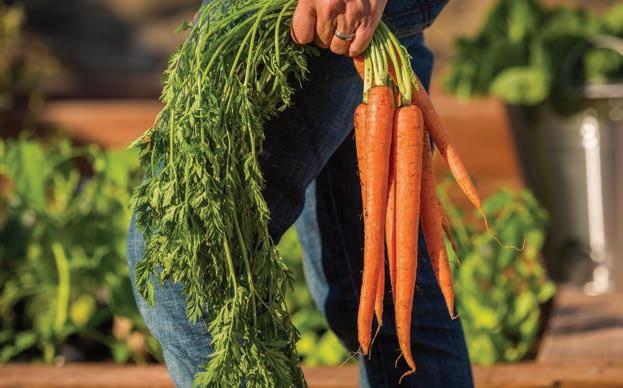

Santa Cruz County • Summer 2023
The temptation of summer’s pull is strong. It coaxes us outside…to the beach, to the mountains, to the airport! If the last few years kept us closer to home, some might venture to say that we are now ready to explore, to plan adventures, to take off into the world. And even if some of us are putting a CSA subscription on hold or skipping
Tuesday
Felton Farmers Market
1–6pm • May through October 120 Russell Ave. • 831.454.0566 santacruzfarmersmarket.org
El Mercado Farmers Market
2–6PM • April through October Ramsey Park, Watsonville 831.726.4257 • pvhealthtrust.org

Wednesday Downtown Santa Cruz Farmers Market
1–6pm • Year-round Lincoln and Cedar • 831.454.0566 santacruzfarmersmarket.org

Friday


the garden bed prep in lieu of a trip abroad, that doesn’t mean we aren’t rejoicing in seasonal abundance. A summer tomato on vacation is certainly still fabulous, and can remind us that the ones at home are delicious too…for when we get back.
—Amber TurpinSunday
Watsonville Certified Farmers Market 2–7pm • Year-round
Watsonville City Plaza, Peck & Main streets 831.588.7366
facebook.com/watsonvillefarmersmarket
Saturday
Aptos Certified Farmers Market 8am–Noon • Year-round 6500 Soquel Drive • 831.728.5060 montereybayfarmers.org


Westside Santa Cruz Market 9am–1pm • Year-round 2801 Mission St. • 831.454.0566 santacruzfarmersmarket.org
Scotts Valley Farmers Market 9am–1pm • May to November 5060 Scotts Valley Drive, Boys & Girls Club Parking Lot • 831.454.0566
santacruzfarmersmarket.org
Live Oak/Eastside Farmers Market 9am–1pm • Year-round 21511 E. Cliff Drive • 831.454.0566
santacruzfarmersmarket.org
Capitola Certified Farmers Market 11am–4pm • Year-round 1855 41st Ave. • 650.290.3549 wcfma.org



Corralitos Farm & Garden Market 11am–3pm • Year-round 127 Hames Road • 831.724.1332
wayne@catalyst2001.com
Monday Pacific Grove Certified Farmers Market
3–7pm • Year-round Central and Grand avenues 831.384.6961 everyonesharvest.org

Tuesday Carmel Barnyard
Certified Farmers Market 9am–1pm • May through September
3690 The Barnyard 831.728.5060 • montereybayfarmers.org
Alisal Certified Farmers Market 11am–4pm • June to October 632 E. Alisal St., Salinas 831.384.6961 • everyonesharvest.org
Old Monterey Marketplace & Farmers Market
4–7pm • Year-round Alvarado Street • 831.655.2607 oldmonterey.org
Wednesday
Natividad Certified Farmers Market 11am–3:30pm • May to October






1441 Constitution Blvd., Salinas 831.384.6961 everyonesharvest.org
Hollister Certified Farmers Market 3–7pm • April 19 to October 11 San Benito Street, Hollister 831.636.8406 downtownhollister.org





Thursday
Carmel–by-the-Sea Farmers Market 10am–2pm • Year-round 6th and Mission streets 831.402.3870 • goodrootsevents.com
Seaside Certified Farmers Market
Starts June 15 • Laguna Grande Regional Park 1259 Canyon del Rey Blvd. 831.384.6961 • everyonesharvest.org
Soledad Certified Farmers Market
4–8pm • April to October 137 Soledad St. • 831.678.3504
Friday
Monterey Certified Farmers Market 8am–noon • June 4 through September
1410 Del Monte Center 831.728.5060 • montereybayfarmers.org
Salinas Valley Memorial Certified Farmers Market

12:30-5:30pm • May to November
450 E. Romie Lane • 831.384.6961 everyonesharvest.org
Saturday
Old Town Salinas
Farmers Market
9am–2pm • Year-round
300 block Main Street 650.815.8760
wcfma.org/salinas
The Power Plant
Certified Farmers Market 9am–2pm • Year-round 7990 Highway 1, Moss Landing 831.453.0022 • thepowerplant.store/farmers-market
Sunday
Carmel Valley Certified Farmers Market
10am–2pm • Year-round Mid-Valley Shopping Center 550 Carmel Valley Road 650.290.3549 • wcfma.org
Marina Certified Farmers Market 10am–2pm • Year-round 215 Reservation Road • 831.384.6961 everyonesharvest.org
Monterey Certified Farmers Market 8am–noon • June 4 through September 1410 Del Monte Center 831.728.5060 • montereybayfarmers.org

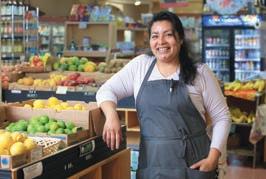






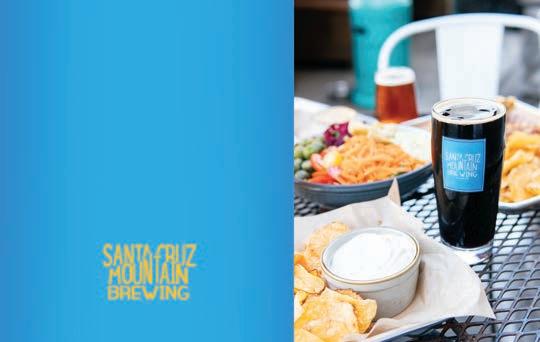


The arrival of summer brings a bounty of melons in all sorts of colors and sizes; California leads the nation in their production.
Squeezing lime and sprinkling chile over fruits and veggies is a classic Mexican pairing, and inspired this recipe. The pinch of salt boosts the fruity flavor and accentuates the sweetness of the fruit.
These refreshing and easy-to-make popsicles can be prepared with any variety and color of the melon rainbow.
Daniela Gerson is a Los Angeles-based food photographer and creative director on a mission to show the world that VEGGIES ARE SEXY!

Refreshing watermelon and tangy lime popsicles studded with chile-spiced chunks.

4 cups melon chunks, seedless or seeds removed, and divided
4 tablespoons sugar, divided, and more to taste
2 tablespoons freshly squeezed lime juice and more to taste
½ teaspoon kosher salt, divided
1 tablespoon Maras chile flakes
In a blender, purée 1 cup of melon, lime juice, 3 tablespoons of sugar and a pinch of kosher salt until very smooth. Add a splash of water at a time, if necessary, so that the mixture liquefies.
Using a fine mesh sieve, strain melon juice into a bowl, pressing out the solids. Add more lime and sugar to taste. Purée will taste slightly less sweet once frozen.
Meanwhile, toss the remaining 3 cups of melon chunks with the remaining tablespoon of sugar, salt and Maras chile flakes.
Divide the chile-spiced melon chunks evenly between popsicle molds and top with the melon juice. Leave about ½ to ¾ inch of popsicle mold empty for expansion. Put on the lids, insert sticks and freeze until fully frozen and solid, 4 to 8 hours depending on your freezer but, preferably, overnight. Makes 6.
Note: Different varieties of melon vary on the tartsweet spectrum. Any variety works in this recipe, such as watermelon, cantaloupe, honeydew, etc. Simply adjust the amount of sugar and lime to taste.
Pro Tip: The chile you use is a matter of personal taste. It’s not just about the heat; it’s about the flavor.
I like Maras chile flakes, which have a bold and fruity heat that’s not overpowering. Feel free to substitute it with ground guajillo, chipotle or your personal favorite.
Adultify: Add 2 ounces of tequila to the blender with the melon for a grown-up version of these popsicles.



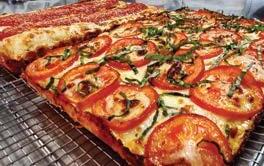



 BY EMILY BEGGS
PHOTOGRAPHY BY DORIANA HAMMOND / WEST CLIFF CREATIVE
BY EMILY BEGGS
PHOTOGRAPHY BY DORIANA HAMMOND / WEST CLIFF CREATIVE
As the sunlight begins to fade across the oak and redwood-studded hills of the Pajaro Valley, José and Claribel Gallardo quietly stuff my large market bag with lush bunches of Swiss chard, beets and fennel. I’ve never left the farm without a week’s worth of produce, insistently tucked into any available vessel.
On a previous visit, Claribel handed me an egg and broccolini taco, whipped up at the end of her workday in a makeshift farm kitchen, feeding me and my two young daughters after spending hours patiently explaining the details of her operation to us.
While I asked her question after question, she held my four-year-old daughter Kestrel’s hand, instructing her on how to dig carrots, chuckling quietly when Kez removed her shoes to plaster her toes with mud. The Gallardos wholeheartedly welcome and are generous to a variety of curious visitors who pass through their 18-acre organic farm in Watsonville.
They grow more than a dozen different crops, which they haul to six weekly back-toback farmers markets throughout the state. At market, José proudly lets customers know that they grow everything they sell, and that they are welcome to come visit the fertile patch of land his family tends for a tour.
What’s striking about the Gallardos’ hospitality is the backdrop of near-fatal adversity that paved their miraculous path from field laborers to organic farm owners. José uses an animated internet meme as a personal metaphor. In the animation, a rat is caught belly-up in a trap. Gradually, it pushes the snap bar off of its chest, then raises and lowers the bar as if bench pressing. The idea that “what doesn’t kill you makes you stronger” is an important mantra for José, yet his approach to farming centers on a commitment to creating a healthy work environment for his family, which in turn provides his customers with top-quality, nourishing produce.
José’s ability to deftly pluck a radish from fiercely hardened soil, oversaturated by rain then parched due to a storm-damaged water pump, masks the absence of three fingers on his right hand. As an 18-year-old, José had recently immigrated from Michoacán, Mexico and was living alone in Ontario, California when a workplace accident permanently altered his hand. An industrial press used to print text and graphics onto plastic bags crushed his fingers and wouldn’t release
as José attempted to wrench his arm away. Factory workers fled the scene, except for one young man whom he calls his “savior,” because he helped and accompanied José to a local hospital.

During a lengthy, solitary recovery, post amputation of his third, fourth and fifth digits, stray bullets struck the apartment complex where he lived, narrowly missing his body and leaving him feeling cursed. He describes the depression he experienced in Ontario with candor, equally acknowledging the deeply faithful dreamer that remained alive inside of him even in the bleakest moments. It was years later, in the farm fields of Watsonville, that he had what he jokingly refers to as the “desdicha,” or misfortune, of meeting Claribel, tossing her a lover’s half-wink, he tells me as we stood in the shade of leafy oak trees talking about their life together.
Claribel, who is originally from the state of Chiapas, Mexico, and José were dissatisfied with labor conditions they encountered in conventional agriculture. Claribel recounts scolding a field manager for inappropriately grabbing female coworkers. It has been estimated that female farmworkers are indeed two to three times more likely to experience sexual harassment than workers in other sectors.
Claribel also developed asthma-like symptoms while working with crops including strawberries, which are often grown using harmful


They started with half an acre, and describe the process of expanding as taking one step forward, then two steps back.The Gallardos grow more than a dozen different crops on their Watsonville farm and hope that their son will stay in farming.
FOLLOW US: @visitsantacruz


fungicides and pesticides. In response, the Gallardos set out to improve their wages and working conditions by pursuing opportunities at the Agriculture and Land-Based Training Association (ALBA), a 1,000acre educational facility in Salinas that helps launch limited-resource farmers. José enrolled in the ALBA training program, and by 2012 the Gallardos were farming on ALBA land.
They started with half an acre, and describe the process of expanding as taking one step forward, then two steps back. “We didn’t understand the business side well,” Claribel says. In the beginning they sold wholesale, but when they figured out how to sell at farmers markets, things began to change.
For José, the income is only part of the benefit of selling directly to consumers. He views a “smile of satisfaction” from happy customers as being among the top perks of the job, and it is this connection that fuels his commute to markets as far away as Sacramento and South Lake Tahoe, as well as closer ones in San Carlos, Marina and Pacific Grove.
While José is on the road, Claribel works in the field. As the daughter of a farmer, starting an organic farm resonated with Claribel as she was brought up on a tropical fruit plantation. Her father tended his own family’s corn and vegetable plot in the Chiapas highlands while working in orchards of sapote and guanabana. Claribel possesses a reserved but stalwart dedication to her work that is particularly apparent when she talks about offering an array of accessible, pesticide-free vegetables to her own community at the Marina Farmers Market.
A mother and businesswoman, she is intimately aware of the challenges families face in trying to advance socioeconomically while nourishing their children, whether that means paying extra for higherquality groceries, or juggling work and childcare. At the market, she
keeps in touch with women undergoing chemotherapy and working to manage diabetes. Customers tell her that the soups and juices they make with her greens are an important part of their healing.
I ask José and Claribel what their goals are for the future. They agree that they would like to grow slowly, expanding land under cultivation while maintaining a close eye on their crops to guarantee beautiful produce for their customers. Their 16-year-old son has grown up watching his parents build momentum as organic farmers, and they are proud that he is willing to help out in the fields, curious about learning to drive a tractor, and amenable to spending time at farmers markets. “It would be wonderful to see him stay in farming,” says José.
Like most California farmers, the Gallardos currently face significant losses due to winter storms, however, Claribel is quick to assert that they feel nothing but thankful, as “it could have been so much worse.” Their farm is on high ground and did not flood, unlike the fields and homes of so many others downstream in Pajaro.

When we last spoke, their irrigation system was still offline due to trees crushing a transformer near their property, delaying their ability to plant thousands of starts eagerly reaching for the sun in crates and boxes near their toolshed. Remarkably, the Gallardos didn’t seem stressed. Claribel asked me if I had a garden. I told her it was small and that I was a terrible gardener. She wanted to give me plants to take home.
Emily Beggs is founder and head chef of Kin and Kitchen, through which she creates Central Coast produce-focused recipes and menus for clients around California. She lives in Bonny Doon with her husband, two daughters and a semi-bad cattle dog. More information on her work is available at kinandkitchen.com.
Produce from the Gallardos’ farm is sold at six weekly farmers markets, including Marina and Pacific Grove.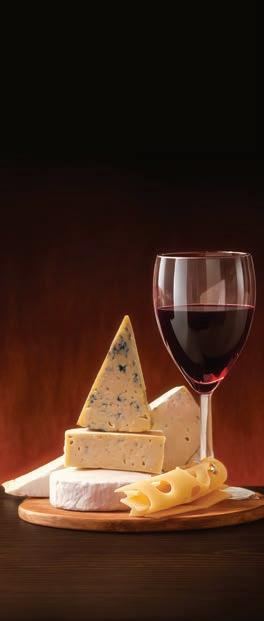
Experience
Hagerty Drivers Club ® members receive 20% off tickets.

16 August 2023
Monterey Jet Center Learn
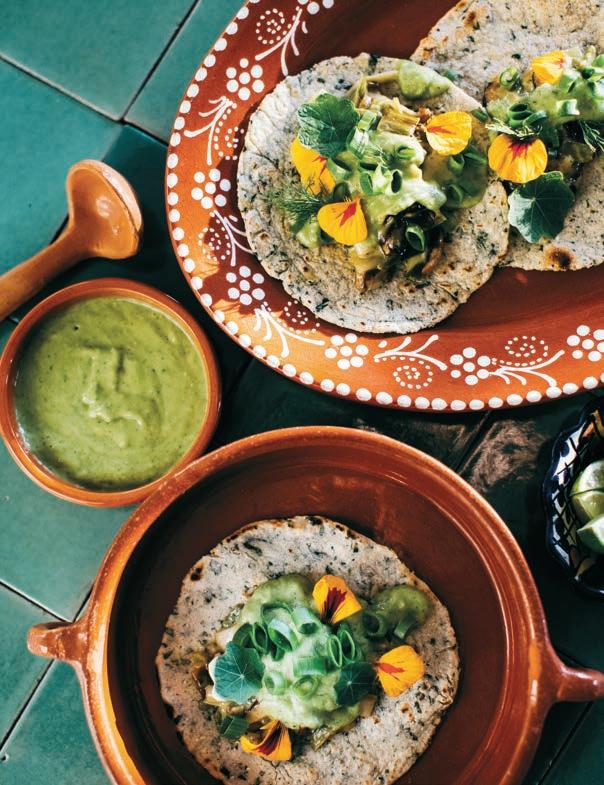
These recipes are inspired by Claribel Gallardo’s ability to create quick, vegetable-based dinners in her outdoor farm kitchen using produce from her fields. The salsa recipe is from Michoacán and pays homage to José Gallardo’s roots. It pairs perfectly with the rajas, and is a refreshing condiment for warm weather. The Gallardos grow the majority of the produce called for in these recipes, including the handful of blanched chard we threw into our masa for fresh, “green” tortillas, which Claribel makes with broccolini.
And Leeks
4 poblano chiles
2 cups shiitake mushrooms, stems removed, caps sliced
3–4 small young leeks, green leaves removed, white stalks sliced into ½-inch half circles
Olive oil
Salt
1 cup shredded Jack cheese
½ cup crème fraîche, or more for a creamier mixture
Turn a burner to the highest setting and place the peppers, one by one, directly on the flame. Using tongs, turn the pepper until the skin is completely blackened. Place the hot peppers in a heat-proof bowl and cover, allowing the peppers to cool while their steam loosens their skin. Once the peppers have cooled down, remove the outer skin, slice them open and remove any seeds. Then chop the peppers into small strips.
Next sauté the leeks, chile strips and mushrooms in olive oil until the leeks are beginning to brown and the mushrooms are soft. Add the shredded cheese and stir vigorously with a wooden spoon to disperse the cheese, then add the crème fraîche and continue stirring to
integrate the cream. Add more crème fraîche if desired, and salt to taste. Serves as taco fillings for 4.
Adapted from Margarita Carrillo Arronte’s Mexico: The Cookbook published by Phaidon
3 small tomatillos
1 Serrano chile, cut in half with seeds removed (use only ½ for less heat)
2 cloves garlic
2 small avocados, peeled, pit discarded
1 onion, roughly chopped
1 small handful fresh cilantro leaves and tender stems
Sea salt

Place the tomatillos in a small saucepan, cover with water and bring to boil for 5 minutes. Remove the tomatillos and reserve the cooking liquid.
Next, blend the avocado and vegetables until smooth, using the reserved cooking water to help thin the mixture if needed. Add salt to taste.

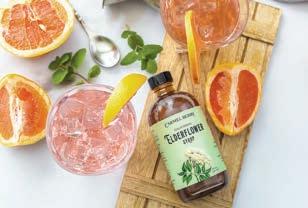
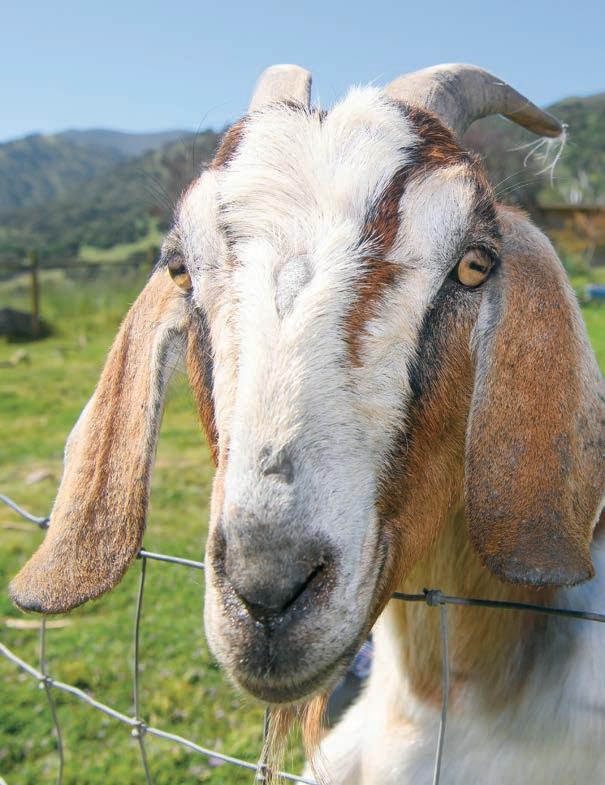
Goat meat is growing in popularity, but why are so many Americans still afraid of it?
 BY LAUREL MILLER
PHOTOGRAPHY BY MICHAEL TROUTMAN
BY LAUREL MILLER
PHOTOGRAPHY BY MICHAEL TROUTMAN
Love or hate them, most people have strong feelings about goats. It’s unsurprising, then, that eating goat is also controversial, at least for Americans. Goat is the most widely consumed meat worldwide—the lean, delicious, low cholesterol, red protein is popular in Africa, the Middle East, Mexico and the Caribbean, as well as parts of Asia, Europe, and Central and South America.
Some goat-based ethnic dishes, such as Mexican birria and Jamaican goat curry, are so iconic they’ve transcended borders. Others, like Jordanian mansaf (goat braised with spices and yogurt) and Portuguese chanfana (goat stewed and served in a clay pot) are virtually unknown outside of their native countries, despite their status as the national dish.
Why, then, has goat meat has never gained traction in the United States? It wasn’t uncommon in colonial America, as settlers relied upon what they could grow or raise; goats were an economical, easy-keeping source of not just meat but also milk, fiber and leather.

However, whether due to colonialism or the common misperception that the meat is rank or tough, goat fell out of favor while beef, pork and poultry became the forces behind the American meat industry.
Yet, over the last two decades, domestic goat consumption has increased, making the meat relatively easy to find at ethnic markets, restaurants and butcher shops—a trajectory that parallels immigration patterns. According to the USDA, the goat meat industry is “one of the
fastest growing segments of livestock production in the United States… the rise in popularity and demand…reflects an increase in [specific ethnic] populations.”
For a growing number of boutique goat producers like Turning Leaf Ranch in Salinas, there’s demand not just from ethnic communities but also from chefs and consumers desiring a more sustainable meat source. Goats are low-impact browsers that disperse plant seeds in their manure, which acts as fertilizer; also, their appetite for brush makes them highly efficient at mitigating fire danger. Further, goats thrive on agricultural land not well-suited for other livestock or crop production, which is why the hot, rocky Texas Hill Country is the nation’s epicenter of goat meat production. Even so, a Texas A&M study states that 30% of the goat meat sold in the U.S. is imported from Australia and New Zealand.

“To be honest, I’d never tasted goat until I raised my own,” says Brian Palmer, co-owner of Turning Leaf along with business partner Jacob Flanagan. Palmer grew up on a rabbit meat operation in Chowchilla and added several dozen caprines to Turning Leaf’s sheep production after learning there is a “massively underserved” domestic and local market for goat meat.
“You can’t just go to Safeway for goat meat,” he says. “And what you typically find in ethnic markets has been raised on grain, concentrates
Goat meat is clean, mild and slightly sweet, with a hint of umami. It’s not as earthy as lamb.
and feed supplements which increase fat and growth rates, which negatively affect the flavor.”
Meat goats are leaner and more muscular than dairy goats, although there are some dual-purpose breeds like the Nubian. The South African Boer goat is considered the premier meat breed, but Spanish, kiko and myotonic goats are also popular. Palmer’s small hormone-and-antibiotic-free herd consists of primarily Boer-dairy crosses. To supplement the farm’s breeding program, he sources male baby goats, known as bucklings, from Monterey and San Benito County dairies and cheesemakers (see sidebar top right).
Turning Leaf practices mob, or high intensity grazing, which means the animals are kept in a mobile paddock that Palmer moves twice a day with a tractor. This form of high-density rotational grazing—on the farm’s five acres of chemical-free pasture—is beneficial for various reasons, says Palmer. The short time frame allows the pasture to reset and have a long recovery period and prevents the animals from becoming too picky about forage and thus allowing fewer desirable plants to take over. The density of livestock also means that the goats trample a sizable percentage of forage onto the ground, which reduces moisture loss, increases soil biological activity and enables new plants to growth even when there’s little rainfall. The herd’s diet is supplemented with hay from June through December when there is less forage.“Goat meat is clean, mild and slightly sweet,
Edible Monterey Bay reached out to several local goat dairies for this story, and they declined to comment.


“If you eat goat cheese, you have a moral imperative to eat goat meat occasionally,” says sustainable food systems advocate and former chef James Whetlor. The United Kingdom-based author of Goat: Cooking and Eating (Quadrille Publishing) is also the founder of Cabrito, an “ethical meat company on a mission to put all the billy goats born into the U.K. dairy system back into the food chain.”
Because they don’t produce milk, dairies must find an outlet for bucklings (known as wethers if castrated). They are most frequently sold as cabrito, but may also be used for breeding stock, pets or brush clearance. By consuming locally raised goat, as Whetlor points out, you’re supporting your foodshed and helping make the dairy and cheese industries more sustainable and profitable.
Recipes and more information can be found on goatober.com—an international campaign uniting dairies, farmers, chefs, nonprofits and consumers to help end food waste in the goat dairy system.
with a hint of umami. It’s not as earthy as lamb,” says Palmer. “It’s an honor to deliver our goat meat to customers.”
The stereotypical “goaty” aroma or flavor most people (often falsely) associate with goat products is the result of short-chain fatty acids. The profile of these acids varies, depending upon the season, and the goat’s sex (there’s debate as to whether castration helps mitigate these factors), age and diet. The scent is concentrated in the fat, thus the younger and leaner the animal, the more tender and milder the meat.
Because goat is so lean, it’s imperative to cook it properly, usually with “low and slow” methods like braising or stewing for cuts like leg, shank and neck; adding acidic components like wine, tomato or yogurt further tenderizes the meat. Loin chops are ideal for grilling, while suckling goats less than 12 weeks of age—known as cabrito—are typically roasted, grilled or cooked in a pit.
“If you’ve never had goat, try it from a chef that knows how to prepare it properly,” says Adam Afaneh, lead line cook at Jack O’Neill Restaurant in Santa Cruz. “Once you’ve experienced how flavorful the meat is, there’s no going back.”
Afaneh, who was born in Jordan to Jordanian and Palestinian parents, says eating goat resonates with him due to his heritage. Although he moved to the U.S. as a toddler, Afaneh spent every other summer in Jordan on a relative’s olive farm, where goat was a frequent addition to the dinner table.
“Most Jordanians purchase a live goat from a local shepherd and take it to a halal butcher, or they buy the meat at the butcher shop,” he says. “It’s important within Arabic culture that livestock are raised and slaughtered humanely.”
Palmer has his goats slaughtered at a small USDA facility in Paso Robles when they reach one-and-a-half to two years of age and are between 130 and 170 pounds. “We have a lot of strikes against us as far as turning a profit because we choose to grow our animals slowly,” he says, adding that the resulting meat is worth the wait. “We dry-age it for three days to condense the flavors and tenderize it, and I think that’s what really sets our meat apart and makes it special.”
Turning Leaf primarily sells packaged meat direct to consumers— what Palmer calls “farm to family” marketing. He also sells cabrito, whole, mature animals and live goats, which are often slaughtered onsite, a common cultural practice for many in the Hispanic community.

“Whenever I tell my family in Mexico I’m coming to visit, they always respond, ‘I’ll get a goat ready,’” says Jalisco-born Gino Ramos, banquet chef at The Lodge at Pebble Beach. “It’s very much a part of Mexican culture to cook cabrito for celebrations.”
Like Afaneh, goats are part of Ramos’ cultural and culinary identity. His family raised goats and his relatives from Oaxaca and Zacatecas marinated cabrito in a fragrant paste of chiles, herbs and vinegar before wrapping it in leathery agave leaves for pit-roasting. Ramos’ family also made goat cheese and dishes like machito, goat stomach stuffed with boiled
goat blood sausage, aromatics and vegetables, and goat soup with avocado leaves and hoja santa. “I think people will be surprised when they try goat,” he says. “Don’t be afraid of it.”
For Palmer, his admiration for caprines—and appreciation for their culinary diversity—has only grown over the years. “There’s just something about goats,” he says. “This facet of our farm keeps evolving and growing…I can’t not do it.”
Laurel Miller is a food, spirits, travel and design writer and the special issues editor of Edible Aspen. She grew up raising dairy goats on her family’s California ranch, and is a former cheesemonger and the author of Cheese for Dummies. She recently relocated from Austin back to her native California to be closer to the best burritos on earth.
For the best flavor and freshest meat, it’s worth purchasing at the farmers market, says Palmer. If you’re looking for suckling goat, you’ll likely need to order it well in advance, regardless of retail outlet.
Turning Leaf Ranch: Whole and suckling goat and packaged meat for pickup or delivery in the tri-county region. turningleafranch.com
Master Butcher Fresh Halal Meat & Kitchen: In addition to selling whole and half suckling goat and various cuts, you’ll find prepared foods like goat kebabs, BBQ chops and goat curry.
1111 W. El Camino Real, Sunnyvale, 408-746-5040 masterbutcher.us

Jubba Somali Restaurant: Roasted goat is a signature dish at this







In the summer of 2015 I visited London for the first time. It was the end of August, my birthday weekend, and I was there to attend the famous Notting Hill Carnival, which had been on my bucket list since high school. I met up with my friend of 20 years, who lived in London, and she had a treat for me: curried goat patties, the ultimate surprise. We stopped in to the Jamaican Patty Co. in Covent Garden, a food hall in London’s West End. Eating the patties was a magical experience—the crust was right, flaky but not too messy, and the goat was seasoned to perfection. We completed the meal with grapefruit sodas. I have since had goat patties in Kingston, but at the time, it was the most novel specialty item for a goat lover like me.
After that trip, I created my own version of the patties and always have a package or two of ground goat meat in my freezer. These little hand pies can be served as a snack or as a main dish with a mixed green salad.
For the pastry
3¼ cups (400 grams) all-purpose flour, plus extra for rolling
2 teaspoons salt
½ teaspoon ground annatto, optional
½ teaspoon ground turmeric
½ cup (150 grams) coconut oil, melted
¾ cup (200 grams) cold water
1 large egg, beaten with cup water, for glazing, optional
For the filling
Olive oil
1 pound ground goat
Salt and pepper
1 large yellow onion, finely chopped
3 medium cloves garlic, minced
3–5 scallions, white and green parts, finely chopped
½ fresh Scotch bonnet pepper, seeds removed, minced
1–1¼ cups chicken or vegetable stock or water
1½ tablespoons tomato ketchup
1 tablespoon soy sauce
1 tablespoon ground turmeric
1 teaspoon ground cumin
½ teaspoon ground pimento (allspice)
1 teaspoon kosher salt
4 sprigs fresh thyme
¼ cup dried breadcrumbs
Lime wedges, for garnish
Make the pastry dough: Put the flour, salt, annatto (if using) and turmeric into a large mixing bowl; whisk gently to combine. Combine the melted coconut oil with the water, pour evenly over the dry ingredients and mix with your hands or a spoon until the dough comes together. Do not overmix.
Remove the dough from the bowl, pat into a disk, wrap in plastic and chill for 15 minutes.
Make the filling: Heat 1 teaspoon olive oil and brown the ground goat in a large skillet over high heat, breaking up the meat with a wooden spoon (as you would with ground beef). When the meat is almost cooked through, remove it from the pan. Reduce heat to medium and add 1 tablespoon olive oil, onion, garlic, scallions and Scotch bonnet pepper to the same pan. Cook, stirring often, until vegetables have softened, 4–5 minutes.
Return the meat to the pan and add stock or water, ketchup, soy sauce, spices and salt. Stir to combine and add the thyme. Reduce heat to low and simmer, stirring occasionally, until most of the liquid has evaporated, about 20 minutes. Remove the pan from heat. Discard thyme sprigs. Taste and adjust seasonings, if needed. Add breadcrumbs and stir thoroughly. Cool the filling to room temperature (or refrigerate until cold) before assembling the patties.
Make the patties: Remove the dough from the fridge and let sit out for 5 minutes, then divide the dough into 12 equal pieces and roll each into a ball. Using a rolling pin on a floured surface, flatten each ball into a 6-inch round and place them on a parchment-lined sheet tray dusted with more flour.
Working with one round at a time, spoon a scant 1/3 cup cooled meat filling onto a pastry round, covering half but leaving a little border. Spread the filling evenly on that half, then brush the edge with water and fold the dough over to make a crescent shape.
Press out as much air as possible, then press gently around the edges to seal the patty (or use a fork to seal edges and create a design). Trim and neaten the edges. Prick the tops a few times with a fork to allow steam to escape while baking. Repeat with the remaining rounds, adding each finished patty to a parchment-lined sheet tray while you work on the rest, 6 patties to a tray, leaving a 3- to 4-inch space between them. Chill the patties thoroughly before baking (at least 20 minutes).
While the patties chill, preheat the oven to 400° F and place one of the racks in the upper third so the bottoms of the patties won’t brown too much before the top can brown and cook through.
Brush the patties with an egg and water mixture, if desired, for a nice, glossy sheen.
Place the baking sheets in the oven and reduce the temperature to 375° F. Bake for 15–20 minutes, until golden brown and crispy at the edges, checking and rotating your tray(s) at the 10-minute mark. Cool on a wire rack. If the patties have ballooned, press the tops gently to allow some of the steam to escape. Serve warm with lime wedges and a cold beer. Makes 12 medium patties.
This recipe appeared in the Spring 2022 issue of Edible Boston.










Why there is no local salmon this summer and a health check on the Monterey Bay STORY AND PHOTOGRAPHY BY
When Santa Cruz resident Corey Ridings isn’t surfing or coaching golf at Branciforte Middle School, she’s “gone fishing.”
As a voting member of the Pacific Fishery Management Council (PFMC)—appointed in 2021 by U.S. Commerce Secretary Gina Raimondo and California Gov. Gavin Newsom—and the first member who also works for a major ocean advocacy group, her job is to manage all things fisheries on the West Coast.
Ridings and fellow PFMC members recently made the tough decision to ban commercial and recreational fishing of Chinook (king salmon) for the 2023 season.

“Scientific estimates show very low numbers of fish,” she explains, and the number of king salmon expected to return to California rivers this year is near record lows.
“At the most basic level, California has had so much habitat degrada-
JEFF BAREILLEStion of our streams, rivers and estuaries that it has become incredibly difficult for salmon to complete their life cycle,” she says. “King salmon require cold and clean freshwater to survive, but water policy and California’s years of drought and warming water temperatures due to climate change have inhibited the salmon from spawning for the past two to three years.”
The water policy Ridings refers to is the 2019 federal act that diverts water from its river ecosystems, that support fish protected by endangered species laws, to the state’s Central Valley farmers.
By law, the U.S. government is supposed to rely on scientific data to strike a balance between the two. But in this case, the Trump Administration ordered California to re-engineer its water plans, overlooking scientific research and biological opinions. California sued to overturn the act and the Trump Administration counter-sued. Ultimately a com-
promise was reached to divert less water to farmers than initially planned.
Unfortunately, the compromise, combined with years of drought, cut off salmon from the mountain rivers, where they cool off in summer, and from the floodplains, rich with bugs, where they pack on weight in winter and spawn. This has resulted in complete closure of king salmon season in California and most of Oregon.
Coastal communities that rely on king salmon fishing season are experiencing the combined effect of climate change and water policy.
“The ban very much affects the livelihoods of fishing communities. It’s incredibly sad and will be tough for folks,” says Ridings. “But, also note that salmon fisheries are important for some of California’s Tribes who have harvested and depended on salmon since time immemorial.”

“Fishermen from both the commercial and recreational sectors are largely supportive of the ban. They understand that scientific estimates show very low numbers of fish, and they understand the need to protect the species for the future," she says.

As for Ridings, her bond with fish runs
deep. She’s the manager of fish conservation at Ocean Conservancy—the global organization at the forefront of ocean protection. Here Ridings has been measuring the effect of climate change on fish since 2013.

Earlier, Ridings studied marine biology at Occidental College and earned a master’s degree in public health from Yale University. After graduation she was an epidemiologist in Michigan, where she worked with racial and ethnic minority communities to improve disparities in health outcomes and shape state policy. Then she served as a Peace Corps volunteer in the Philippines, developing sustainability projects with local fishing communities.
Presently, she’s pursuing a doctorate in environmental management at the University of Washington, working on fishery and public health issues related to the fishing community and ecosystem sustainability.
more!
Whether you’re spending the day at the beach or need groceries for the whole week, New Leaf Community Markets has everything you need for the perfect day. Stop by your neighborhood New Leaf to stock up on local favorites.
10% of profits go back to the community

Ridings admits that she has a lot on her plate. “All my jobs are related, in terms of topic, interest and passion. They’re all about fish and public health.”

Ridings attributes her dedication to fishing communities to her work in the Peace Corps. “I was inspired by how tightly connected to the ocean the people were and how they protected their fisheries and worked to conserve and ensure that there were fish for their kids to eat.”
Not long after, Ridings was an observer on a North Pacific commercial fishing vessel, counting fish and gathering data. There she saw firsthand how commercial fishermen work, large-scale fish processing and how that part of the food supply chain functions.
Later, she received the Sea Grant Knauss Fellowship to work with the U.S. House Committee on Natural Resources and began to learn more about policy and politics, and how decisions are made at the national level.
“Working in Washington, D.C. got me thinking about conservation, exploring ideas around justice, equity, management and governance,” she says, “and led me to develop the concept of ‘justice sustainability,’ which posits that you can’t have sustainability without social justice.”
This season’s ban on commercial king salmon fishing is a good example of the need to consider the human element or justice sustainability in environmental policy.
The good news of this story is that heavy winter rain and a massive snowpack mean plenty of water for fish in the rivers and for farmers. And Ridings has a good prognosis for the Monterey Bay area, with suggestions of actions to take in our daily routines to ensure ocean health and the sustainability of fish and fishing communities.
• Eat locally caught seafood, as it helps support environmental and social sustainability worldwide.
• Get educated and involved with local decision-making; it will help support a thriving Monterey Bay ecosystem.
• Stay curious. Monterey Bay is ever-changing. Get to know it and its inhabitants, including people, and continue looking for ways to
• Creeks flowing into Monterey Bay are the southernmost home to native populations of coho salmon

• The Monterey Bay National Marine Sanctuary is home to more than 500 species of fish and 36 species of marine mammals
support a healthy ocean ecosystem.
“We’re a very healthy fishing community. Monterey Bay’s natural ecosystem and surrounding communities are doing well,” says Ridings. “Our attention to the Bay is a big part of its health. We like to fish. We like to surf. We like to scuba dive. We like to swim. We like to boat. It’s a central part of the culture here.”
Jeff Bareilles is a Santa Cruz-based hospitality consultant, artist, photographer and writer who has overseen the beverage programs at some of the finest restaurants in California, including Manresa, Atelier Crenn, Commis and Mourad.
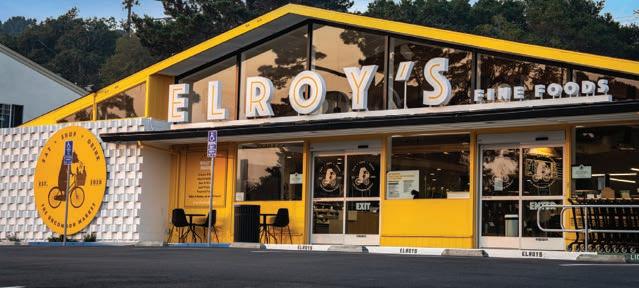
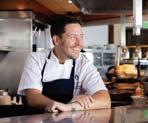





Forgive 2,000-foot-high Machete Ridge in Pinnacles National Park for scoffing at a 10-year anniversary. (Or for that matter, a 100-, 1,000- or 10,000-year anniversary.)
The iconic rock formation is the result of an ancient volcano formed…23 million years ago.
But to the humans who travel from across the planet to gawk at the increasingly famous tumble of spiky spires, it’s a big deal. This year, Pinnacles is celebrating 10 years of national park status.
It was January 2013 when President Barack Obama, at the urging of Rep. Sam Farr and other local lawmakers, made the onetime national monument the ninth national park in California, the most of any state.
MARK C. ANDERSONThe youngest is also the smallest.
Compared to, say, Death Valley (3.37 million acres) or Yosemite (747,956 acres), the roughly 26,000-acre Pinnacles National Park can seem microscopic.
Salinas Valley Tourism and Visitors Bureau Executive Director Craig Kaufman likes to call it a “boutique” national park.
And that might be a feature, not a flaw. The coziness means Pinnacles’ biggest draws can be accessed in a day or two of adventure.
The headlining element: those megalithic rock formations, complete with swooping California condors, the largest bird on the continent.


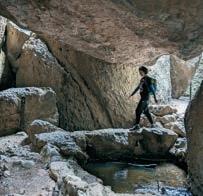


It’s the 10th anniversary of Pinnacles’ designation as a national park and a good year to visit. Be sure to take plenty of water as temperatures can soar in the summer.
The igneous outcroppings present a geologist’s fantasy: breccia, flow-banded rhyolite, pumice lapilli tuff, volcanic glass (aka perlite), and quartz- and feldspar-studded dacite. Translation, for the less rock nerdy: There are a lot of colors, textures, shapes and strata to soak in.
They also draw rock climbers from around the world.
As much as anything, the rocks provide the cathedral for hiking trails that criss-cross microclimates, more than 30 trails all told, many of them breathtaking in figurative and literal ways.
Any direction taken within Pinnacles’ confines predictably includes oak woodlands and grasslands, pockets of chaparral and canyon landscapes that shoot off in any given direction.
Two mainstream must-dos: 1) The two caves (Bear Gulch and Balconies), which invite a flashlight and Instagram posts; and 2) Bear Gulch Reservoir, which inspires hikers to drop anchor for a picnic paired with reflections of the surrounding rocks on the water.
In short, it’s one heck of a backyard.
That’s official language, BTW. It comes from Kaufman—who says, “I still think a lot of locals, or even the regional population, doesn’t realize the natural asset that is in their backyard.”
And from Anna Velazquez, mayor of Soledad, “Part of my job is being able to highlight this amazing nature in our backyard,” she says. “How do we not lose sight of how special it is?”
Velazquez grew up the daughter of farmworkers in Soledad and has lived there essentially her entire life. She remembers picnicking and playing in and around the park with her family as a kid.



Back then the motto for her hometown blared from a billboard next to Highway 101: “It’s Happening in Soledad!”

That slogan shifted when Pinnacles was granted a national-park pedigree. The new calling card for the town of 24,778 inhabitants: “Gateway to the Pinnacles.”



That was something Soledad’s City Council secured as a trademark ASAP, and now appears throughout the city.
“The park designation has brought a lot,” she says. “New way-finding signs are important, but we’ve also put more effort into marketing to capture increased tourism and economic development with an emphasis on the park, to make sure we have the connection to Pinnacles.”
The sheer quantity of European and Asian languages heard on recent hikes suggest PNP’s reach is growing. Park attendance hit 275,023 in 2022 compared to 224,476 the year before it got the na tional park nod.
Velazquez observes real change, with more to come, including a shipping container village in her town, starring boutique eateries, wine tasting and Pinnacles themes.
“We’re really looking at possibilities of who Soledad is and who Soledad can be, while being in close alliance with the park,” she says. “We want to make sure people coming here don’t leave our city without really coming in—to enjoy the park but also go downtown—and experience the local small town charm Soledad still has.”
As the travel-hiking app, AllTrails, puts it, after nearly 5,000 hiker reviews: “If you're looking for elevation gain, Pinnacles National Park has you covered.”
The Condor Gulch Trail to High Peaks Trail Loop is most popular for a reason, traversing 5.6 miles (and gaining 1,630 feet in altitude) through caves, wildflower-accented landscapes and (yes) rock formations. Clockwise is the consensus choice for the approach; ample water is compulsory.
The longest trek links together the North Chalone Peak, High Peaks, Balconies and Condor Gulch trails to the tune of about 20 miles and 5,308 feet of total ascent.
Not all walkabouts are as ambitious. Others prove flat and mellow but no less spectacular. From the west, Prewett Point Trail works as an easy-going, time-efficient and ADA-accessible jaunt starting at the West Pinnacles Visitor Contact Station, which features interpretive panels.

Pinnacles is many things at once: an almost spiritual experience; a wonderland of unrivaled wildlife populations; a geological phenomenon; an iconic ridge appearing on local wine labels and other merch; and—particularly if you tempt the 7.9-mile High Peaks Trail and 1,425-foot elevation gain—a heck of a hike.
Getting there involves a choice. The eastern gate (in San Benito County) is reached by driving south from Hollister, while the western entrance (in Monterey County) is approached through Soledad.
While the West Side hosts a visitors center, the lodging possibilities are a touch stronger on the East Side, which also provides the park’s campgrounds. The experience from either side delivers unique adventures, and demands different tack.
Here are some of our favorite places to stay, eat and drink, or pick up picnic supples, on the way in and out of Pinnacles. Each entry is flagged “E” for eastern approach (San Benito County) or “W” for western approach (Monterey County).
Cocuyo’s Restaurant (W)
Here whole-roasted fish, savory huaraches, loaded tortas (the Cubano is loco) and quesabirria are joined by a bunch more authentic specials. The converted house it occupies is cute, the family-run staff is sweet and—this just in—it’s the mayor’s favorite spot in town.
185 Kidder St., Soledad, (831) 237-5004, facebook.com/profile.php?id=100057595983529
The 19th Hole Booze & Food (E) Tres Pinos brings outsized flavor to its modest population of 921. The 19th’s name nods to the now-closed Pinnacle Hills Golf Course, but the booze and food are very much alive, from 4pm Wednesday through Sunday. Think cowboy-strength cocktails and “hard rider” half-pound burgers, “hole fire” wings, Buffalo shrimp Caesar salads and oak-fired rib-eye steaks.
7071 Airline Hwy., Tres Pinos, (831) 628-0100, facebook.com/the19thholetrespinos

Windmill Restaurant (W)
Regularly voted the best restaurant in the city by locals, Windmill spins a lot of plates and checks a lot of boxes. Some of those include country breakfasts, big salads, loaded potatoes, ambitious sandwiches, thick steaks, big burgers and specialties like the enchiladas supreme, across breakfast, lunch and dinner.
1167 Front St., Soledad, (831) 678-1775, facebook.com/windmillsoledadrestaurant

TASTING ROOMS

Eden Rift Vineyards (E)
The east side of Pinnacles unlocks incredible—and underappreciated—wine country. Eden Rift presents one of its gems (see also neighboring Calera and DeRose) for 1) balanced chardonnays, focused pinots and old-vine zinfandel, and 2) a breathtaking estate-turned tasting/event space with welcoming lawns and historic architectural California terroir to match the vino. 10034 Cienega Road, Hollister, (831) 636-1991, edenrift.com

Scheid Vineyards (W)
The vibe proves welcoming, and also dynamic. Guests can mingle on the patio gazing at the 400-foot wind turbine that powers the eco-friendly operation, or tuck inside for a more guided tasting experience. The range of varietals goes big quantity without sacrificing quality; tastes to prioritize include the pinot blanc, pinot noir and the “50/50” with half syrah, half cab.
1972 Hobson Ave., Greenfield, (831) 386-0316, scheidvineyards.com
Paicines General Store (E)
A character rich and old-school roadside store, PGS is the last stop before the park, with all the basics but also Mexican food to order and homemade salsas in jars.
12261 Airline Hwy., Paicines, (831) 628-3293




La Placita Mercado (W)
Friendly service, handy Latino-leaning inventory, plus a full-on taqueria in house.
325 Front St., Soledad, (831) 678-8925, facebook.com/profile.php?id=100069955911364
Vertigo Coffee Roasters (E)
A standout spot for coffee, yes, but also stocked with local wines, smart café offerings, craft beer and curated prepared products made by locals. A picnic paradise. Extra points for stopping by nearby San Juan Bakery for awesome breads.
81 4th St., San Juan Bautista, (831) 623-9533, vertigocoffee.com


Hacienda de Léal (E)
With decor inspired by its sister vineyard further into the valley, smart room details, mature manzanillo olive trees and a selection of complimentary perks, Léal is a cool place. Its most seductive feature might be its location on the edge of downtown San Juan Bautista, a tiny town (population around 2,000) with major charms, including time-honored restaurants, rustic saloons, old-school ice cream shops and picturesque Mission SJB in the background, with chickens traversing most everywhere freely.
410 The Alameda, San Juan Bautista, (831) 623-4380, liveloveleal.com
Posada de San Juan (E)
Located right in the heart of San Juan Bautista, this charming boutique hotel is within walking distance of all the town’s attractions. It offers mission-style décor, an enormous fireplace in the lobby and free continental breakfasts. Some rooms feature fireplaces and large jacuzzi tubs.
310 4th St., San Juan Bautista, (831) 623-4030, posadadesanjuanbautista.com
Inn at the Pinnacles (W)
The availability is limited but the views around the inn’s home vineyard, Brosseau, are anything but. Themed guest suites occupy a Mediterranean-style home on 160 acres, 2 miles from the west entrance. Each suite features a soaking tub and includes continental breakfast. It’ll run you $295/ night (two-night minimum), but it’s a destination next to a destination.32025 Stonewall Canyon Road, Soledad, (831) 678-2400, innatthepinnacles.com
Pinnacles National Park Camping (E) Tent, group camping and RV sites settle into an idyllic oak-studded meadow and canyon within walking distance of the east entrance. An on-site swimming pool is typically splashable from mid-April through September, pending weather; the charming Campground Store with its slick merch inventory is open daily. Reserve well in advance: This place is as popular as it is rare.
2400 Hwy. 146, Paicines (877) 444-6777, nps. gov/pinn/planyourvisit/camp.htm





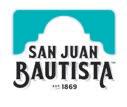











Persephone
7945 Soquel Drive
831.612.6511 • persephonerestaurant.com
With a namesake like the mythic Persephone, this restaurant in Aptos proclaims its deep reverence for seasonal cooking. Themes central to harvest, winter and spring are core to Persephone’s story, and are reflected in the changing menu at this fine dining destination, where chef Cori Goudge-Ayer presents inventive, ingredient-driven creations. The restaurant is a family-run passion project, bringing together parents, siblings and a long history of culinary arts in a beautifully redesigned space overlooking Aptos Creek. Open for lunch F–Sa noon–3pm, for dinner Th–Sa 5pm–close. Second Sundays, themed wine tastings with small bites. Fourth Sundays, Winemaker Dinner with fivecourse pairing menu.
New Leaf Community Markets
161 Aptos Village Way
831.685.8500 • newleaf.com
This latest branch of the beloved local market group occupies the remodeled Hihn Apple Barn, built in 1891. In addition to local groceries and organic produce, New Leaf Aptos has made-to-order sandwiches, pizza, freshly rolled sushi, soup and hand-prepped salads, as well as a coffee bar, juice and smoothie bar and organic Straus soft serve ice cream. Open daily 8am–9pm.
Venus Pie Trap
113 Esplanade
831.661.5763 • venuspietrap.com
Next door to Venus Spirits Beachside and across from the beach, the Pie Trap is a daytime venture from distiller Sean Venus, serving 11th Hour coffee in the mornings, with pastries from Manresa Bread, Laundromat bagels and quiche and pies from Edith’s Pie. At 11am the ovens are fired up to offer a menu of New Haven-style pizza pies, including tomato, clam-garlic and sausage-leek. Open Tu–Su 7am–3pm.
Venus Spirits Cocktails & Kitchen - Beachside
131 Esplanade 831.688.8917 • venusspirits.com
Closed this winter for renovations, reopening spring 2023. The Penny Ice Creamery
141 Aptos Village Way, Suite 2 831.204.2523 • thepennyicecreamery.com
Open Su–Th noon–9pm, F–Sa noon–10pm. See The Penny description under Santa Cruz for more.
Seascape Foods
16B Seascape Village • 831.685.3134
A charming family-owned market with an ample deli counter featuring daily chef specials, salads, breakfast items, freshly-squeezed juices and sandwiches on housemade organic sourdough bread. The grocery section includes organic produce, artisanal products, local beer and wine, and gifts. Eat outside next to the fountain on the patio or take your goodies to the beach nearby. Open daily 8am–8pm.
East End Gastropub
1501 41st Avenue
831.475.8010 • eastendpub.com
East End Gastropub is a sister eatery to the popular West End Tap & Kitchen, but aside from sharing owners and chefs, East End’s beautiful, modern interior is entirely different and offers its own robust, sophisticated menu. Chef Geoffrey Hargrave has created dishes that are familiar yet innovative, such as house-made focaccia bread, fried chicken bao buns and fire roasted shrimp. Shared plates, pizzas and salads come in generous portions for a family-style meal. The restaurant also offers a rotating selection of local beer, a strong wine list and seasonal craft cocktails. Open M–Th 4–9pm, F noon–9pm, Sa-Su 11am–3pm for brunch, and 4–9pm.
All of these restaurants emphasize local ingredients and they also advertise in Edible Monterey Bay! so please check online before you go and tell them we sent you.
New Leaf Community Markets
1210 41st Avenue
831.479.7987 • newleaf.com
The café at the entrance offers great alternatives to fast food, serving economical daily specials, wraps, pizza and homemade soup and espresso drinks—with free wi-fi in the outdoor dining area. Inside the market, a full deli has made-toorder sandwiches, healthy takeout salads and entrée items. Open daily 8am–9pm.
The Penny Ice Creamery
820 41st Avenue
831.204.2523 • thepennyicecreamery.com
Open Su–Th noon–10pm, F–Sa noon–11pm. See The Penny description under Santa Cruz for more.
Trestles
316 Capitola Avenue
831.854.2728 • trestlesrestaurant.com
Just steps away from the iconic Capitola train trestle, chefowner Nick Sherman’s passion for great food is evident in every dish at his popular neighborhood bistro. Local seasonal ingredients star in appetizers like chicory salad, roasted fairytale pumpkin with goat cheese and mole negro, Brentwood street corn and crispy pork belly with watermelon radish. Entrées include smoked eggplant gnocchi, Niman Ranch pork chop and fresh fish—all served with local wines and craft beers on tap. Open W–F 5–9:30pm, Sa–Su 4:30–9:30pm.
Alvarado Street Brewery & Bistro
Carmel Plaza, Suite 112
831.293.8621 • asb.beer
From the team behind award-winning Alvarado Street Brewery, the Carmel bistro offers a full menu of ASB brews, along with hard cider, local wines and inventive craft cocktails. The menu goes beyond pub food to include oysters with mignonette or chili oil, Moroccan spiced fried chicken, crispy tempura-battered cauliflower and its popular burgers with truffle or garlic fries. Open Su–Th 11:30am–9pm, F–Sa 11:30am–10pm.
Covey Grill 8205 Valley Greens Drive
831.620.8860 • quaillodge.com/dining/coveygrill

Covey Grill at Quail Lodge features USDA steaks and sustainably sourced seafood complimented by unique plantbased offerings in addition to seasonal American cuisine. Covey Grill offers casually elegant indoor and outdoor dining options against the stunning backdrop of Quail’s sparkling lake and lush garden landscapes. Open for full dinner service Mon–Sun 5–9pm, with bar opening at 4pm.
Earthbound Farm’s Farm Stand
7250 Carmel Valley Road
831.625.6219 • earthboundfarm.com
Earthbound Farm’s 100% certified organic kitchen delights with specialty coffee and tea, soft serve ice cream and a made to order breakfast and lunch menu—including soups, sandwiches, salads, baked goods, fresh juices and smoothies. Food is available to be enjoyed on the beautiful grounds or for takeaway. In addition to certified organic produce, the Farm Stand offers a selection of natural, organic, local beer and wine, groceries, gifts and flowers. Stroll through the gardens and learn about Earthbound’s commitment to organic integrity. Open daily, but check hours online as they change seasonally.
Grasing’s
6th Avenue and Mission
831.624.6562 • grasings.com
Chef-proprietor Kurt Grasing’s namesake restaurant has expanded since opening in 1998 to include two large dining rooms, multiple outdoor dining areas and the ever-popular bar/lounge. A Carmel classic located in the heart of the village, Grasing’s serves California cuisine, with an awardwinning wine list and a vintage spirits program featuring
classic cocktails made with rare Mad Men-era gins, whis keys, Camparis and amaros. Open daily M–F 11am–9pm, Sa–Su 10:30am–9pm.
Pangaea Grill
Ocean Avenue between Dolores and Lincoln
831.624.2569 • pangaeagrillcarmel.com
The flavors of East and West unite at Pangaea Grill—voted Carmel’s Best Restaurant in Monterey County Weekly’s nual poll. The combination of Western dishes such as rack of lamb and Eastern elements like Korean short ribs and kimchi fried rice lends an unusual diversity to the menu. Did we mention brunch cocktails? Your eyes won’t believe it when the Pangaea Bloody Mary arrives at the table stacked with off-the-wall fixings like coconut prawns, meatballs, bacon and gyoza. Open daily for brunch, lunch and dinner
M–F 9am–9:30pm, Sa–Su 8am–9:30pm.
Sea Harvest Fish Market & Restaurant

100 Crossroads Boulevard, Suite A
831.626.3626 • seaharvestfishmarketandrestaurant.com
The Deyerle family that owns this local gem has its own fish ing boats for the freshest catch on the Monterey Peninsula. Sea Harvest doubles as a fish market and casual restaurant with indoor and outdoor seating. The oysters and clam chow der are customer favorites, but don’t miss the fried combo platter, grilled fillets and fish tacos. Open daily 8am–8pm.
Stationaery
San Carlos Square, Between 5th and 6th avenues 831.250.7183 • thestationaery.com
A neighborhood restaurant offering daily brunch and lunch, Stationaery is owned by your hospitable hosts Anthony and Alissa Carnazzo. The kitchen team, led by chef Amalia Scatena, specializes in comforting flavors and local ingredients, with elegant presentations. A new bottle shop next door offers a good selection of European and California wines to enjoy with your meal or take home. Open W–M 8am–4pm. Closed Tu.
Sur at the Barnyard
3601 The Barnyard, Suite A-21
831.250.7188 • surcarmel.com
Local plunder meets island vibes in an open space at the heart of the flowering Barnyard shopping complex. Tropical drinks are customer favorites—swooping from the Copper Pineapple to the Gunpowder Rita—along with rib-stickers like the Kona steak, sashimi wontons, and fried chicken and waffles. Leafy items include the tempura sea bass Asian salad, while macadamia-crusted sea bass and Asian rice bowls add inspiration for the appetite and the imagination. Dog friendly dining on the outdoor patio. Voted “Best Family Restaurant in Carmel 2022.” Open Tu–F 4–9pm, Sa–Su 11:30am–9pm.
Jerome’s Carmel Valley Market

2 Chambers Lane
831.659.2472 • jeromescarmelvalleymarket.com

A chef-owned, friendly neighborhood market, Jerome’s offers local and organic produce, natural meats and seafood, and a great selection of domestic and imported wine, beer and microbrews. French-trained chef and owner Jerome Viel prepares delicious hot foods, sandwiches and salads for eating at outdoor seating or take-away. The offerings start with breakfast burritos, croissants and other French pastries in the morning, followed by favorites such as coq au vin, spaghetti carbonara and chicken enchiladas for lunch and dinner. Open M–Sa 7am–7pm, Su 7am–6pm.
Lucia Restaurant & Bar
Bernardus Lodge & Spa • 415 W. Carmel Valley Road
831.658.3400 • bernarduslodge.com
Indulge in artisanal California country cuisine, award-winning wines and an expansive heated outdoor terrace with the finest restaurant view in Carmel Valley. At this Forbes 4-Star charmer, named for the Santa Lucia mountain range and wine appellation that beckons to the south, executive

chef Christian Ojeda offers both a signature tasting menu and dishes à la carte. Wine list is equally notable. A chef’s table and wine cellar are also available for private dining and special occasions. Open daily 7am–9pm. Live music Tu–W 5–8pm. Saturday and Sunday brunch with live music 11am–2:30pm.
Sunny Bakery Cafe

18 E. Carmel Valley Road
831.659.5052 • instagram.com/sunnybakerycafe
Friendly local café offering homemade pastries, espresso drinks and light fare. Warm, welcoming service and a great array of treats made daily on site with wholesome ingredients that honor the seasons. Owner Analuisa Bejar heads the locally-minded kitchen with favorites like egg sandwiches, quiches, panini, frittatas, and irresistible BLTs. Buttery pastries, cookies, cinnamon rolls, muffins and cakes round out the list. Open W–M 7am–1pm.
Wild Roots Market
6240 Highway 9 • 831.335.7322 (Felton)
13159 Highway 9 • 831.338.7211 (Boulder Creek) wildrootsmarket.com

Wild Roots’ 100% organic produce, natural groceries, organic meats and FishWise-certified seafood all go into the prepared foods offered by the store’s full-service deli, salad and soup bar and juice bar. Enjoy on the patio out in front or take home. Open daily 9am–9pm.
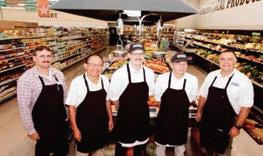
Alvarado Street Brewery
426 Alvarado Street
831.655.2337 • asb.beer/pages/montereybrewpub

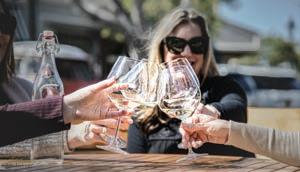
Occupying a former movie house, the original Alvarado Street Brewery brings appropriate theater by way of several key fundamentals. Those include an airy main hall with a long bar and windows into the working brewery; smart bar food ranging from the signature deluxe burger to popular pizzas like the mushroom truffle, with vegan and vegetarian options to boot. There is a welcoming beer garden with its own auxiliary bar and to-go 6-packs and crowlers; and, yes, standout craft beers, whether brave IPAs, ambitious sours or clever collaborations. Open Su–Th 11am–10pm, F–Sa 11:30am–11pm.
Coastal Kitchen
400 Cannery Row
831.645.4064 • coastalkitchenmonterey.com

Executive chef Michael Rotondo’s tasting menu at Monterey Plaza Hotel’s flagship restaurant represents one of the most habit-forming in the region, but there’s a lot more to recommend this spot. Sweeping views of the Pacific await from each seat, all on top of the water. Local delicacies receive elevated treatments: tempura artichoke with black button sage honey, wood-roasted black cod with shishito, squash blossom and charred coconut jus, and king salmon with raspberry, aromatic herbs and seasonal tomatoes— paired with hand-picked top-shelf wines. It’s a place well worth the splurge. Open Tu–Sa 5:30–8:30pm.
Elroy’s Fine Foods
15 Soledad Drive
831.373.3737 • elroysfinefoods.com
The dream market of owners Jay and Chloe Dolata, Elroy’s has an extensive range of gourmet groceries, local seafood, natural meats and fresh organic produce. It also boasts a kitchen with a wood-fired grill and prepared foods to go or to eat in. The Bar @ Elroy’s serves coffee, smoothies and a savvy selection of natural wines. Open M–Sa 8am–8pm, Su 9am–7pm.
Estéban Restaurant
700 Munras Avenue
831.375.0176 • estebanrestaurant.com


At the heart of the downtown Monterey dining scene, Estéban Restaurant serves Spanish influenced cuisine made from fresh, local, and seasonal ingredients. The menu features a selection of long-time Estéban favorites, as well as fresh, new dishes created by executive chef Mario Garcia, who spins out wonderful dishes like Crispy Pulpo, served with remoulade, Yukon potato, chorizo, rosemary chili oil and grilled radicchio. Open for dinner nightly 4–8pm. Tapas hour from 4–6pm nightly.
Jacks Monterey
2 Portola Plaza
831.649.7830 • jacksatportola.com
Jacks Monterey provides a refreshing culinary experience in downtown Monterey, inside the Portola Hotel & Spa. Emphasizing local ingredients, high-quality seafood, and an award-winning wine and cocktail program, Jacks philosophy derives from globally-inspired traditions of California Cultural Cuisine. The atmosphere at Jacks is sophisticated—never pretentious. Open for breakfast W-Su 6:30–10:30am, dinner W-Su 4–10pm, and bar only F-Sa 10–11pm.
The Perfect Crumb Bakery
310 Lighthouse Avenue, Suite B
831.241.6269 • theperfectcrumbbakery.net
A charming spot for breakfast or a light lunch, The Perfect Crumb specialty bakery and café gets rave reviews for its croissants, blueberry scones and cinnamon buns (served on weekends only). Heartier appetites will enjoy the breakfast sandwich with eggs and hash browns served on a home-made biscuit, and for lunch the grilled cheese or Mediterranean turkey sandwich with roasted peppers and sundried tomatoes. Open W–Su 7:30am–3pm, Sa 4–9pm for dessert night.
Peter B’s Brewpub
2 Portola Plaza
831.649.2699 • peterbsbrewpub.com
Peter B’s Brewpub combines award-winning craft beer and sports on 18 high-definition televisions in a relaxed brewpub environment. Monterey’s original craft brewery is distinguished for its variety of beer on tap, innovative pub menu, happy hour, sports bar atmosphere, and outdoor dining on the pet-friendly heated patio with fire pits. Peter B’s is open Wednesday-Sunday with nightly happy hour from 4–6pm, as well as late night happy hour 9–10pm. Open W-Su 4–10pm. Sunday breakfast and football 9:30–11am from September to January.
Schooners Monterey
400 Cannery Row
831.372.2628 • schoonersmonterey.com

Residents regularly vote Schooners Best Drink With a View, and they’re not wrong. The eye candy rolls from the waves crashing on the tidal zone below to Seaside and Santa Cruz beyond, and the sippers are memorable. But that’s only part of the program. The seafood-centric menu ups the atmospheric effect with contemporary takes on a Monterey cioppino pot, seared sea scallops, Dungeness crab dip and Thai-style steamed mussels. Specialty cocktails, organic fresh-pressed juices and curated small batch beers and wine complete the affair. Open 7am–9pm daily.
Sea Harvest Restaurant & Fish Market
598 Foam Street
831.626.0547 • seaharvestmonterey.com

This fresh and casual seafood spot near Cannery Row is perfect after a day exploring the Monterey Bay Aquarium. There are grilled entrées and lots of fried options with chips, including calamari, clams, prawns, scallops and oysters. Try Sea Harvest’s popular clam chowder or a basket of crispy artichoke hearts. Open daily 9am–7pm.
Stokes Adobe
500 Hartnell Street
831.264.8775 • stokesadobe.com
Located in one of Old Monterey’s historic adobe homes,

now beautifully restored, Stokes Adobe offers fresh pastas made in house, truffle chicken and shareable appetizer plates. The bar and cozy outdoor fire pits feature seasonally inspired classic cocktails, and a selection of quality wines by the glass and local beer. Friendly, welcoming staff make sure your visit feels like coming home. Open Th–Tu for happy hour 4–5:30pm and dinner 5–9pm.
Tidal Coffee
400 Cannery Row
831.645.4030 • tidalcoffeemonterey.com
Thoughtful coffee blends with organic beans headline here, but picnic-lunch goodies and house-made sandwiches also come recommended. Monkey bread, maple scones and almond croissants feature in early, followed by soups, salads and panini like the roast beef with horseradish aioli, grilled onion, slices tomatoes, smoked mozzarella and pickled peppers. The coffee shop aesthetic is cute, but the adjacent decks overlooking Monterey Bay present a superior spot to spoon a fig-mascarpone or vegan chocolate-hazelnut gelato with a fresh cortado. Open Tu–Th 6am–noon, F–M 6am–4pm.
Wild Plum Café & Bakery
731 Munras Avenue
831.646.3109 • thewildplumcafe.com
Located in Old Monterey in a vibrant and diverse neighborhood, Wild Plum draws people from all walks of life with sustainable bistro fare that uses organic, locally sourced produce, hormone-free Diestel turkeys roasted on site, grass-fed beef and house-baked bread and pastries. Breakfasts include scrambles, omelets, and breakfast tacos and burritos, and for lunch, choose among soups, salads, sandwiches and paninis, burgers and house specialties. Food to go and catering available. Open W–M 7:30am–3:30pm, Tu closed
Sea Harvest
2420 Highway 1
831.728.7081 • @seaharvestmosslanding
Outdoor tables on a wooden deck overlooking Elkhorn Slough are the perfect place to enjoy fresh seafood hauled in by a fisherman who is part of the Deyerle family that runs the restaurant. Choose from grilled catch of the day, shrimp Louie, fish and chips or some of the best Baja-style battered fish tacos around. Open daily 11am–7pm.
Woodward Marine Market
10932 Clam Way
831.632.0857 • woodwardmarinemarket.com

Moss Landing, population a few dozen, enjoys an outsized amount of beaches, marine research institutes and, thankfully, eateries. Its newest ranks among the most inviting. WMM occupies a historic location at the Moss Landing Harbor fuel dock that delivers place-appropriate fuel for the eager eater. Clam chowder, crispy artichokes and Monterey Bay calamari lead the way on the appetizer front. A pair of salads offers roughage with style. Plates and bowls round out the menu—think bouillabaisse, fish and chips, Woodward burger, artichoke-prosciutto sandwiches and seared fish tacos. Local wines and Prosecco available, as well as local craft beer, including Alvarado Street, Other Brother, Fruition and Corralitos brewing. Wood-fired pizza F–Su. Open Tu–Sa 11:30am–6pm, Su 11:30am–4pm.
Julia’s Vegetarian
1180 Forest Avenue, Suite F

831.656.9533 • juliasveg.com
Voted the best vegetarian restaurant on the Monterey Peninsula for more than 10 years running, Julia’s is known for its wild and exotic mushrooms and house-brewed kombuchas on tap. The menu features a creative twist on vegan, vegetarian and gluten-free food. Try some of the most popular dishes like the fried “egg and bacon” sandwich, exotic mushroom sampler and buffalo cauliflower wings. Open 9am–9pm daily.
Mezzaluna 1188 Forest Avenue

831.372.5325 • mezzalunapasteria.com
Owners Chef Soerke Peters and Amy Stouffer keep their restaurant simple and amazing—and chef Peters is a leader in sustainability on the Monterey Peninsula.Pasta, mozzarella and gelato are made fresh daily. Starters include clam chowder with torched bone marrow and duck liver pâté and grilled octopus, and there are five dishes starring locally crafted mozzarella. Pasta choices are imaginative and include options such as wild foraged mushroom agnolotti with brown butter sage sauce, pappardelle with winebraised rabbit and potato gnocchi with gorgonzola and black truffle oil. Open W–Su 5–9pm. Closed M–Tu.
Wild Fish
545 Lighthouse Avenue
831.373.8523 • wild-fish.com
Owners Liz and Kelvin Jacobs welcome you to feast on the bounty of nearby waters and farms at their 100% local and organic seafood restaurant, enjoying exquisite dishes like crispy sablefish, halibut and petrale sole, accompanied by local vegetables. Chef Melissa Kacos also prepares fresh oysters, innovative salads, house-baked bread and sides like fingerling potatoes with poppyseed crème fraîche or baby carrots with wild nettle pesto, that make this a dining destination. Did we mention English sticky toffee pudding for dessert? Open Su–Th 11:30am–3pm and 5–9pm, F–Sa 11:30am–3pm and 5–9:30pm.
Alvarado on Main
301 Main Street
831.356.0219 • asb.beer/pages/alvaradoonmain
The setting is cinematic (soaring ceilings and vintage bank vaults), the food transcends pub grub (superb flatbreads and lobster rolls) and the beer remains some of the best in the country (check the Great American Beer Fest medals). This Valhalla stays packed for happy hour and beyond, while representing a pillar of Oldtown’s ongoing renaissance, planted in a central location to make it all that much more accessible. Kitchen open Su–Th 11:30am–9pm, F–Sa 11:30am–10pm; bar stays open Su–Th until 10pm, F–Sa until 11pm.
Bliss Blendz
300 Third Street, Suite A


831.593.1108 • blissblendzsmoothies.com
More than just a smoothie store, Bliss Blendz offers healthful açai bowls and a variety of refreshing, energizing drinks to get your day underway. There is a full menu of pourover coffee options, including bullet coffee and green monster mocha. Or stop by for lunch and try a salad loaded with superfoods like berries and nuts or indulge in the chia seed pudding. Open M–Su 10am–5pm.
Lolla
201 Third Street
831.593.5064 • lollasjb.com
Owner Sarah Griss has created a soup, salad and sandwich luncheonette in an adobe building right across the street from San Juan Bautista Historic Park. Lolla sources healthy food from local farms and food producers, giving customers a quick and convenient way to eat locally, seasonally and deliciously. Daily special soups are not to be missed. Open W–Su 11am–3pm.
Margot’s Ice Cream Parlor
211 Third Street
831.623.9262 • margotsicecreamparlor.com
Bringing smiles to the people of San Juan Bautista for 25 years, Margot’s was originally opened as a retail outlet for wonderful handmade candies, including chocolate-dipped apricots, almond butter crunch, marshmallows, oreos, grahams and pretzels, as well as 10 flavors of chocolate truffles. In addition, it offers 28 flavors of Lappert’s ice cream,
espresso drinks and Dole pineapple whip. Open M–Th 11am–7pm, F–Su 11am–8pm.
Vertigo Coffee Roasters
81 Fourth Street
831.623.9533 • vertigocoffee.com
Artisanal coffee roasted on site as well as fresh pastries baked in-house, brunch items, local craft beers and wines, plus wood-fired pizzas with naturally leavened, twice fermented sourdough crust have made Vertigo a locals’ favorite as well as a great find for visitors en route to the San Juan Mission, Pinnacles or other area attractions. Check website for current hours.
Barceloneta

1541 Pacific Avenue, Suite B



831.900.5222 • eatbarceloneta.com

With its cheerful beach stripes, wicker light fixtures and whimsical details, dinner at Barceloneta can feel like a holiday. Owned by chef Brett Emerson and his wife Elan, who ensures service is superb, Barceloneta offers Spanish tapas made with seasonal, farmers’ market produce and several types of authentic paella, along with Spanish wines, beers and cocktails. Open Tu–Sa 5–8:30pm. Closed Su–M.
Bookie’s Pizza
1315 Water Street
bookiespizza.com
Located inside the Santa Cruz outpost of Sante Adairius
Rustic Ales, Bookie’s Pizza is owned by fine dining veteran chef Todd Parker and offers “inauthentic” Detroit-style square pies. Each pizza is made using the best seasonal ingredients from local farms, fishermen and foragers. Dough is made with organic flour, naturally leavened for 48 hours, and each pizza comes with its own unique sauce. Open Su–Th noon–9pm. F–Sa noon–10pm.
Charlie Hong Kong
1141 Soquel Avenue
831.426.5664 • charliehongkong.com
Charlie Hong Kong has been providing the Santa Cruz community with healthy, sustainable, affordable and highquality food since 1998. The colorful, casual eatery’s delicious fusion of Southeast Asian influences and the Central Coast’s local organic produce have made it an inclusive, family-friendly, neighborhood favorite. Its slogan is “love your body, eat organic,” and its cuisine is proof that fast food can be good for you. All signature dishes are vegan with the option to add meat or fish. Gluten-free options are available. Dog friendly. Open daily 11am–10pm.
Chocolate
1522 Pacific Avenue
831.427.9900 • chocolatesantacruz.com

As its name suggests, there are all kinds of decadent chocolate desserts and cocktails at Chocolate the restaurant, but this farm-to-fork local favorite is much more than a dessert spot. Everything is prepared simply and with local organic ingredients whenever possible. Open in downtown Santa Cruz since 1999, options include three kinds of chicken mole and their signature Pasta Rosettes. Many entrées and desserts are gluten free! Cocktails feature Santa Cruzbased distilleries, including Venus Spirits. Check out their extensive cocktkail menu. A party room for your special celebration is available, with seating and menu options to suit the occasion. Open nightly 5–9pm. Lunch Sa–Su noon–4:30pm.
Crow’s Nest
2218 E. Cliff Drive
831.476.4560 • crowsnest-santacruz.com

A perfect spot to enjoy breakfast and lunch or catch a dinnertime sunset over the harbor, the nautical-themed Crow’s Nest is a Santa Cruz institution that never goes out of style. There’s always something happening, from live music to comedy nights and happy hours. Famous for its salads, house-smoked salmon and seafood entrées, the Crow’s Nest

is a member of Seafood Watch and is a certified green business. Open M–F 9am–8:30pm, Sa–Su 8am–8:30pm.

The Grille at DeLaveaga
401 Upper Park Road
831.423.1600 • delaveagagolf.com/dining
DeLaveaga earns obsessive attention for its trails, golf and disc golf, and it also enjoys a worthy epicurean program. The grill’s backdrop enhances the experience, with absorbing views, an outdoor patio and deck, welcoming fireplace and well-appointed bar. Food goes continental-Californian, local and organic, starring breakfast and lunch dishes like the croissant Benedict, the “Moss Landing-style” breakfast sandwich, the DeLa Black Angus burger and the “wedge shot” Louie salad with crab, bay shrimp or both. Open W–Su 8am–3pm.
Laílí
101B Cooper Street
831.423.4545 • lailirestaurant.com

Exotic flavors of The Silk Road are served in a stylish dining room decorated in eggplant and pistachio colors and on a hidden candlelit patio. Locals rave about Laílí’s homemade naan served warm from the oven with a selection of Mediterranean dips. There is a wide variety of deliciously spiced vegetable dishes, and all meats are hormone free and free range. Open Tu–Sa 4–8pm.
La Posta
538 Seabright Avenue
831.457.2782 • lapostarestaurant.com


A cozy neighborhood bistro not far from the Santa Cruz yacht harbor, La Posta chef Rodrigo Serna prepares traditional rustic Italian cuisine using local ingredients. The emphasis is on simple, seasonal selections, with the balance of the menu reflecting whatever produce is freshest right now. La Posta also offers a great selection of Italian wines and a heated outdoor patio. Open W–Th 5–8:30pm, F–Sa 5–9:30pm, Su 5–8:30pm. Closed M–Tu.
New Leaf Community Markets
1134 Pacific Avenue
831.425.1793 • newleaf.com
New Leaf’s headquarters in a former bank building on Pacific Avenue is a worthwhile stop for all foodies. Crowded with gourmet natural foods, it also has a deli with sandwiches, salads and hot entrées. A dining area out front is great for people watching and listening to street musicians. Open daily 8am–9pm.
New Leaf Community Markets
1101 Fair Avenue
831.426.1306 • newleaf.com
The Westside New Leaf has a large deli counter and coffee bar, with a big selection of sandwiches, salads, bakery items, soups and other hot foods. You can eat at an in-store counter or at tables outside. Open daily 7am–9pm.
The Penny Ice Creamery
913 Cedar Street
831.204.2523 • thepennyicecreamery.com
Lines out the front door of its converted Spanish bungalow are evidence of Penny’s popularity. All ice cream, including bases, is made from scratch on the premises using local organic ingredients when possible. Dozens of exotic flavors rotate seasonally, but two favorites are chocolate caramel sea salt and strawberry pink peppercorn. Open daily noon–11pm.
The Picnic Basket 125 Beach Street
831.427.9946 • thepicnicbasketsc.com
Across the street from the main beach, owners of The Penny Ice Creamery have opened an alternative to boardwalk fast food. Sandwiches, organic salads, coffee and beer, all from local food artisans, and of course Penny’s popular ice cream, are all on offer to eat in or outside with your feet in the sand. Open daily 7am–4pm.
TUESDAY
Soif Wine Bar

105 Walnut Avenue
831.423.2020 • soifwine.com
Soif lives on as a bottle shop offering more than 400 hard-to-find European and local wines, along with a wine bar serving wines by the glass. Pull up a barstool and let Soif’s experts introduce you to something new and amazing, while you nibble on wine-friendly small bites. Soif also offers educational wine tastings and its popular Terroiriste Wine Club. Open Tu–Sa 1–8pm.
Staff of Life
1266 Soquel Avenue
831.423.8632 • staffoflifemarket.com
A Santa Cruz landmark, Staff of Life started in 1969 as a small natural foods bakery and has grown over the years into a full service natural foods supermarket known for its local organic produce, seafood and natural meats as well as an extensive bulk department. Deli items and foods from the hot bar can be enjoyed at the Café del Sol. Open daily 8am–9pm.
West End Tap & Kitchen

334D Ingalls Street
831.471.8115 • westendtap.com

Perfect for any parent looking for a happy hour to satisfy the whole family, adults and kids alike can’t get enough of the duck fat popcorn, fried calamari and flatbread pizzas. A diverse, season-driven menu with offerings like seasonal fish with garden fresh veggies, house smoked pork belly with cheddar grits and their famous house ground burger. Also featuring a long list of craft beers, ciders and wine options make West End a Westside staple. The outdoor patio is perfect for people watching amidst the bustling Swift Street Courtyard. Open daily noon–9pm, happy hour M–F 3–5pm.
The Pizza Series
226E Mt. Hermon Road
831.600.8318 • thepizzaseries.com
Chef and world champion pizza thrower Matt Driscoll plans to open his own long-dreamed-about pizzeria in early summer in the spot formerly occupied by Tony & Alba’s, next door to CineLux Scotts Valley. Meanwhile a wide variety of Detroit-style square pies and New York-style round pizzas are available to go Wednesday to Sunday, including cup-n-char pepperoni, sweet heat and BBQ Kauaiian. Check website for days and hours.
Other Brother Beer Co.
877 Broadway Avenue
831.474.1106 • otherbrotherbeer.com
The main attraction here is beer. That said, the brewery’s Snack Shack inspires a visit on its own, and not coincidentally dishes are designed to pair poetically with Other Brother craft brews. The seasonal menu features goodies like: smoked BLTs, spicy capicola sandwiches, a kale caesar, broccolini-and-burrata salad, and a beetand-whipped-goat-cheese toast topped with watermelon radish, edible flowers, sea salt and Like Family olive oil. Open M–Th noon–9pm, F–Sa noon–10pm, Su noon–8pm.
Staff of Life
906 E. Lake Avenue
831.726.0240 • staffoflifemarket.com
Opened in 2021, Staff of Life’s second store in Watsonville is its first and only branch. The store is sustainable down to its bones and includes all the natural groceries, organic produce and includes all the natural groceries, organic produce and baked goods you would find at the Santa Cruz store, along with a juice and smoothie bar, freshly made sushi, a gelato bar, a full deli and a hot bar. Open daily 8am–8pm.
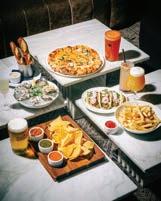




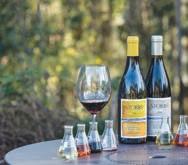
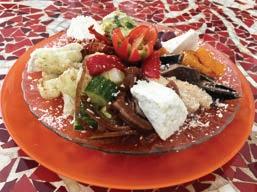
When Ian Brand started making piquette, some of his industry colleagues wondered why an accomplished—and very busy—winemaker would dedicate time to producing a beverage that, categorically, isn’t even wine.
“It’s a byproduct of winemaking,” says Brand, owner of the Salinas winery that produces the labels Le P’tit Paysan, La Marea, and I. Brand & Family. “But we wouldn’t be producing piquette if I didn’t enjoy making or drinking it. I don’t spend time on pointless ventures.”
The beverage in question is made by adding water to grape pomace, the leftover skins, seeds and stems from winemaking. The rehydrated pomace, when pressed, yields a juice with enough sugar for another alcoholic fermentation, resulting in a fizzy, unfiltered, low-ABV vinous beverage, the name of which derives from the French word for “prickle.”
Piquette can be made from any grape varietal or blend of varietals. Its production dates to the ancient Greeks and Romans but it gained widespread popularity among European vineyard laborers and farmers in the 19th century as a thirst-slaking drink that didn’t leave them too tipsy to finish work.
Despite its humble origins, piquette today is regarded as an affordable, sessionable beverage that averages 4% to 5% ABV. “For modern winemakers, it’s a great way to minimize waste and make a high-quality beverage with a low production cost,” says Brand. The only drawback to piquette is that the low acid and alcohol levels make it prone to microbial contamination.
Stateside, piquette has been gaining traction for several years, thanks to small, sustainable producers like Brand and Todd Cavallo of New York state’s Wild Arc Farm. Brand was motivated to make piquette after having an epiphany while sipping a jamaica (hibiscus flower) agua fresca at a Mexican restaurant in Salinas.

“Hibiscus flowers have antimicrobial properties and a sweet-tart flavor profile,” he says. “I thought that adding them to a piquette would not only retard microbial growth, but also balance the flavor and give it more body. Think of it as a natural take on a wine cooler, with organic grapes and flowers, and water. That’s it.”
Brand sources dried hibiscus from Monterey Bay Herb Co. and uses sauvignon blanc pomace from Soledad’s Zabala Vineyards. The piquette yields dominant notes of lemon verbena and tropical fruit, with an herbal lilt. “It combines the aspects of a rosé with a citrusy sour beer,” says Brand, who recommends his piquette, which retails for $18, for sipping poolside or enjoying with friends and some salty or pickled snacks.
“Our piquette is pretty special for a couple of reasons,” he says. “We make a lot of sauvignon blanc, so there’s a higher skin to water ratio, which means more sugar and flavor, and it has a higher ABV at 7.5%.”
The winery makes between 75 to 100 cases of piquette a year, which are sold at the Carmel Valley tasting room and at regional retailers including Coast in Big Sur. “Ian and his team are lovely and create thoughtful wines including the piquette,” says Chloe Scott, Coast’s general manager. “It’s refreshing and vibrant.”
Adds Evan Loewy, Seaside’s Other Brother Beer Co. co-founder, “Sadly, the American market often associates ABV with price point, and at 5% to 11%, it puts piquette into a unique category that needs more education. But the concept makes sense, and conceptually piquette provides room for creativity.”
Other Brother carries several piquettes, including Wild Arc’s Concord Grape Piquette, which Loewy describes as “an adult version of Welch’s.” He also enjoys piquettes blended with apples or pears. “Piquette is versatile and also adds bubbles, fruit and body to cocktails without diluting them.”
As far as Brand is concerned, piquette has a bright future in the United States. “Any snobbery (against piquette) says more culturally about wine than piquette. Wine is about a time-honored, place-based beverage; piquette is its own thing.”








